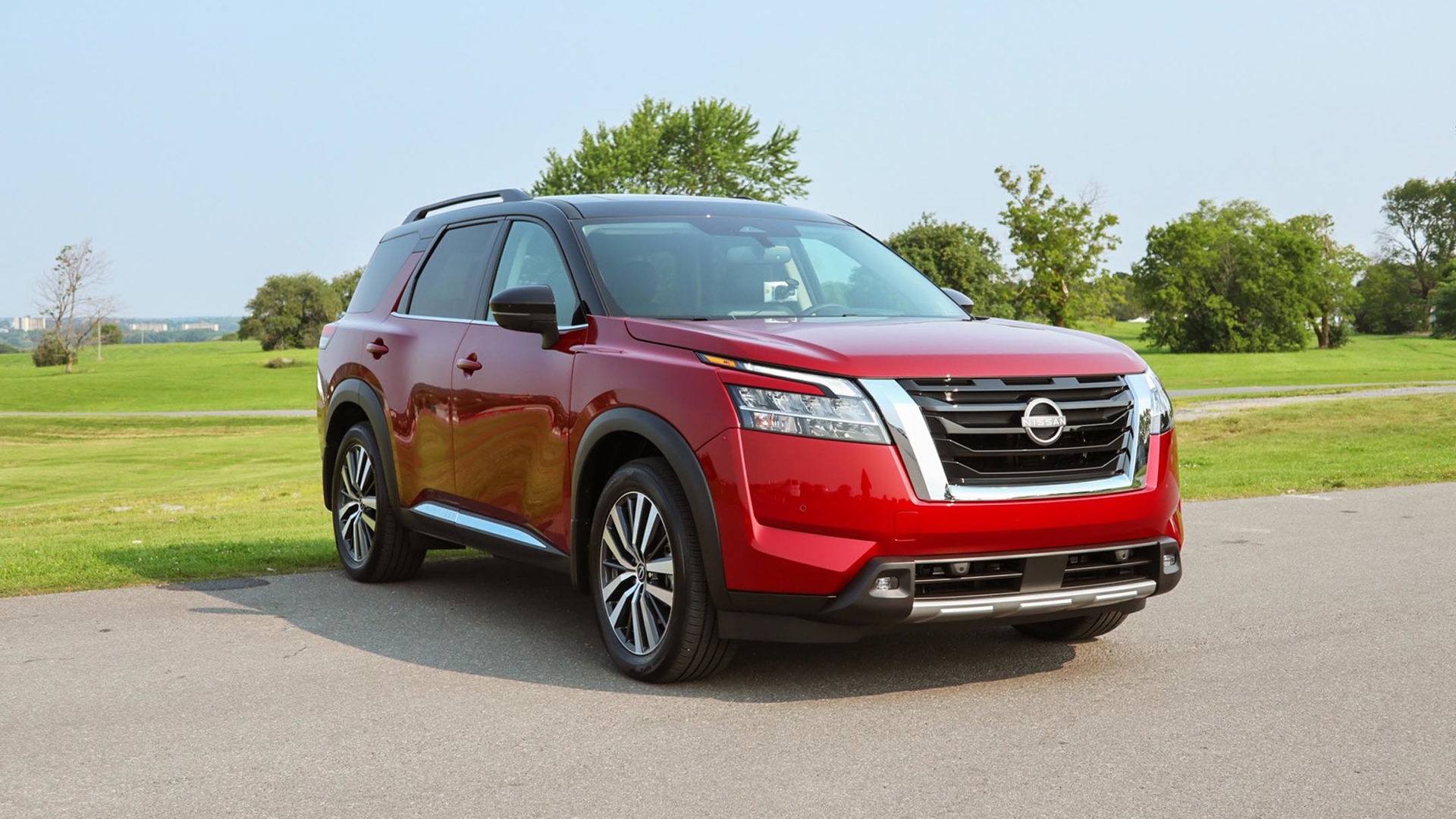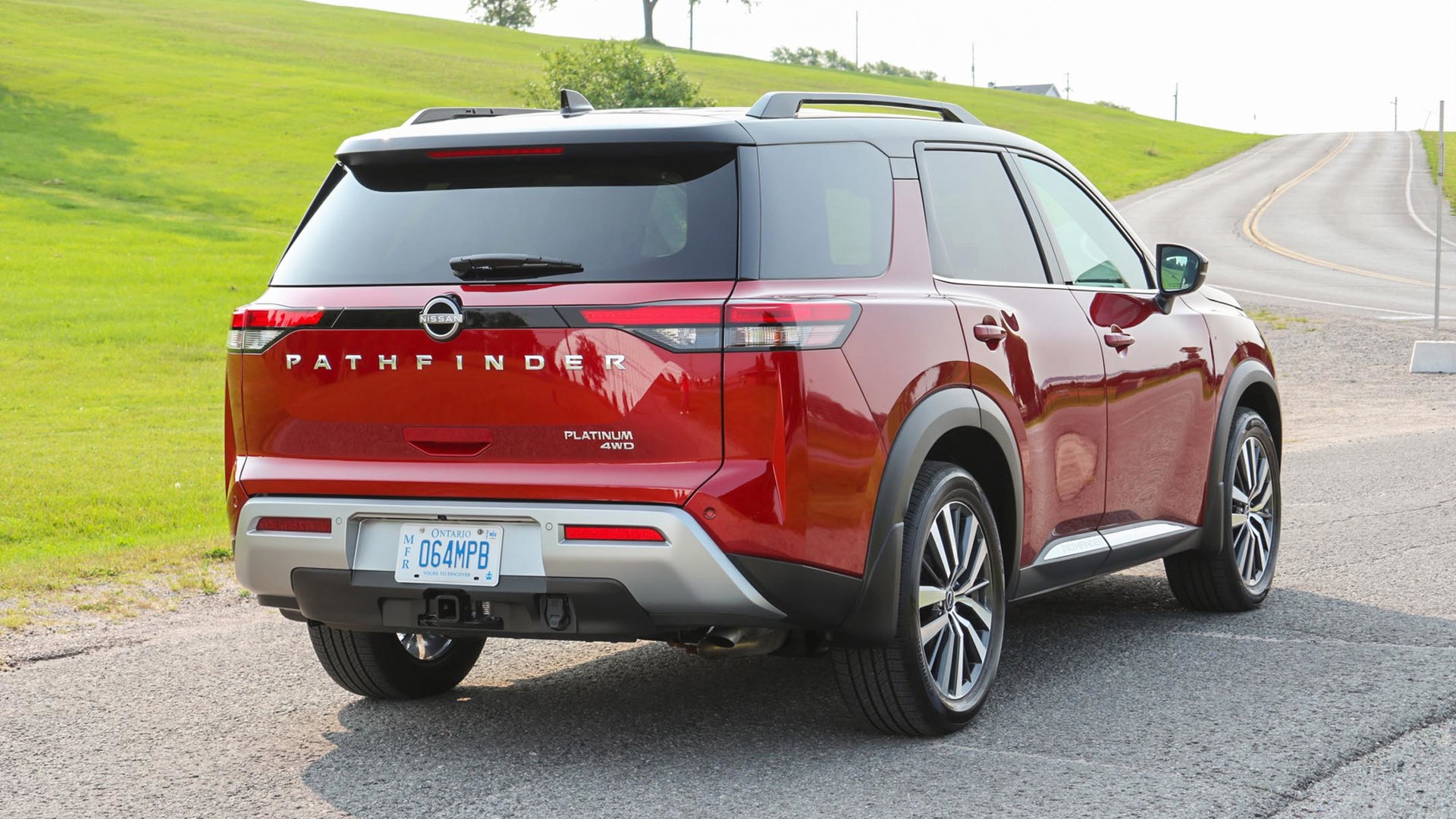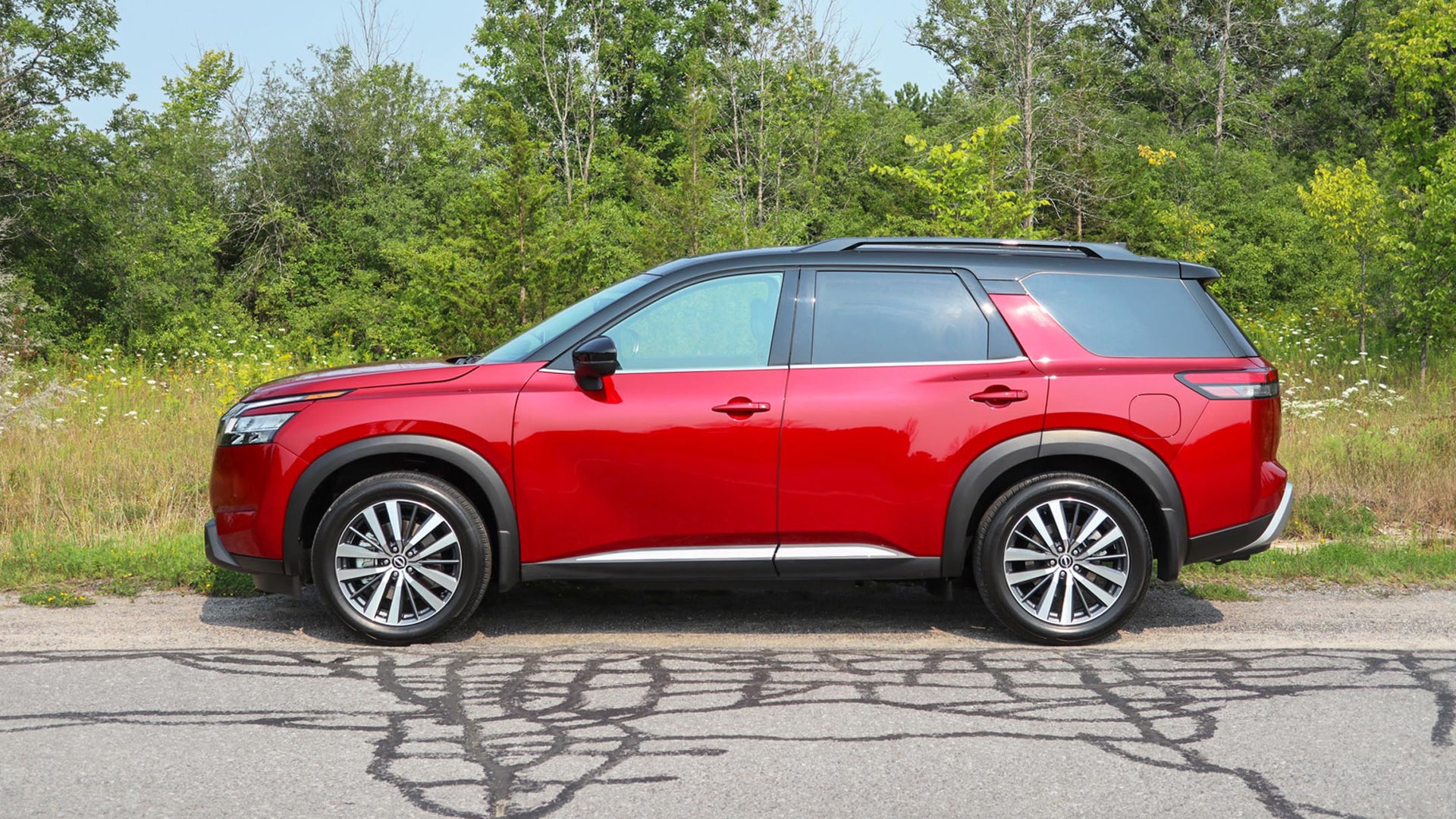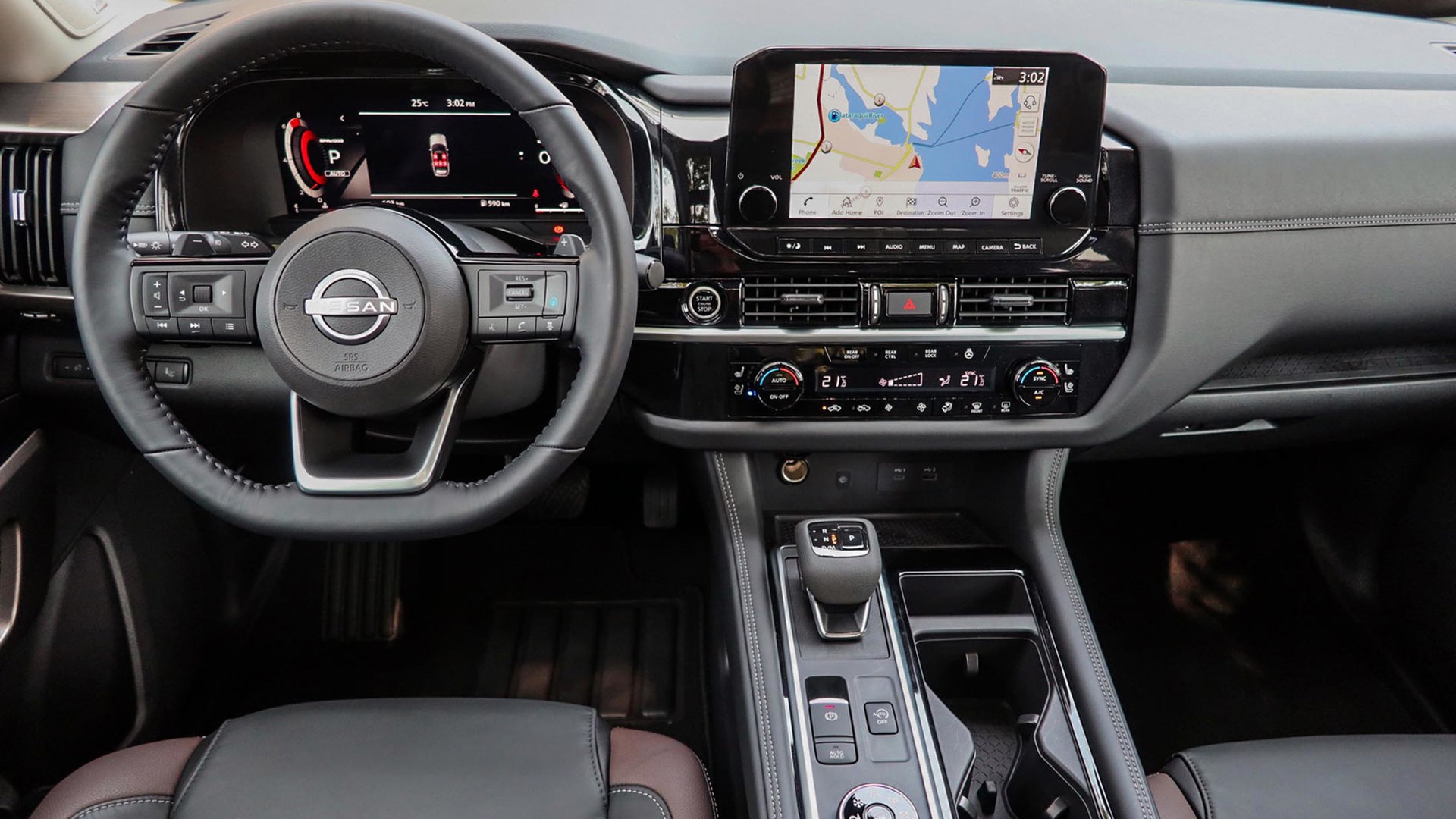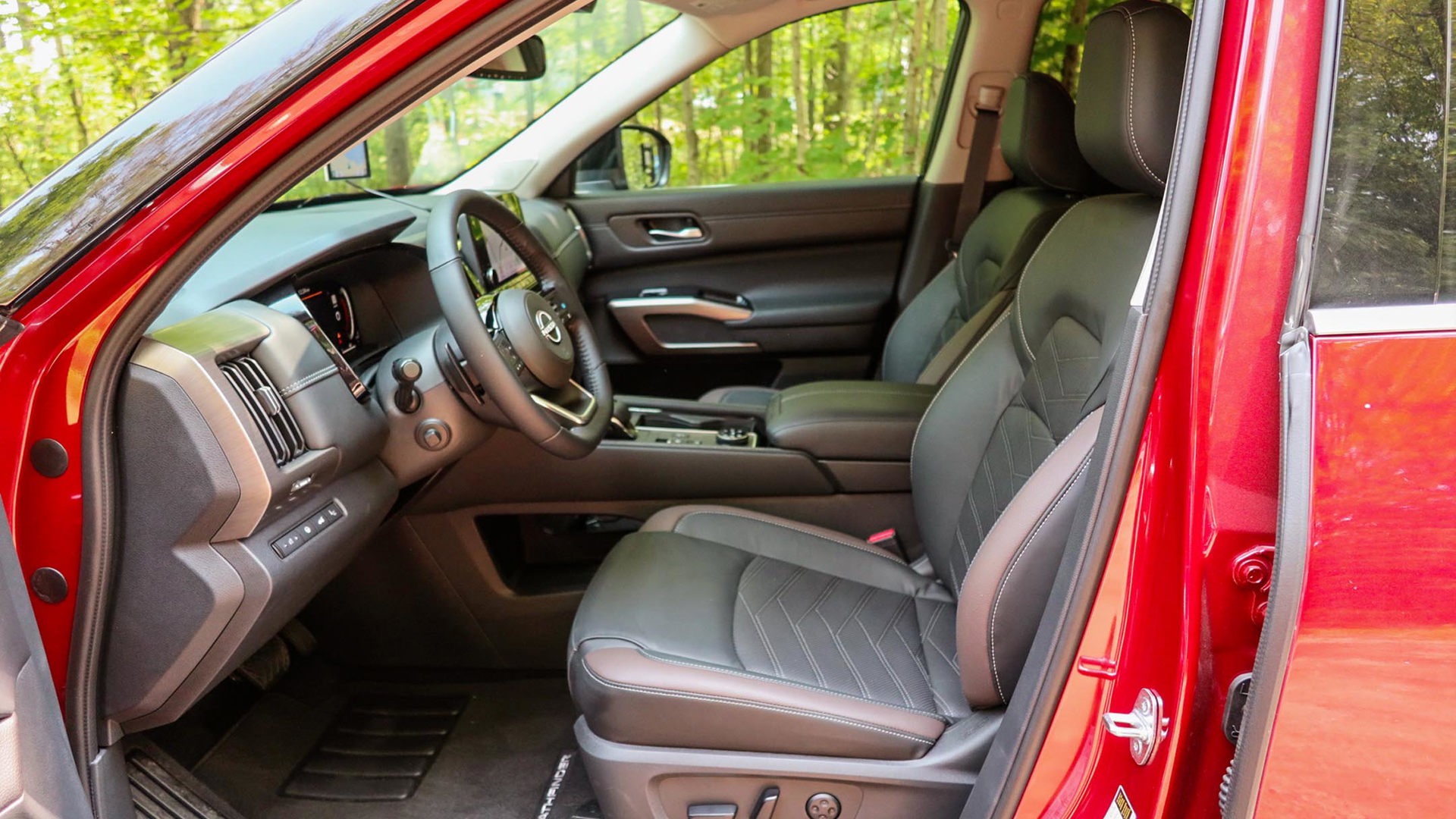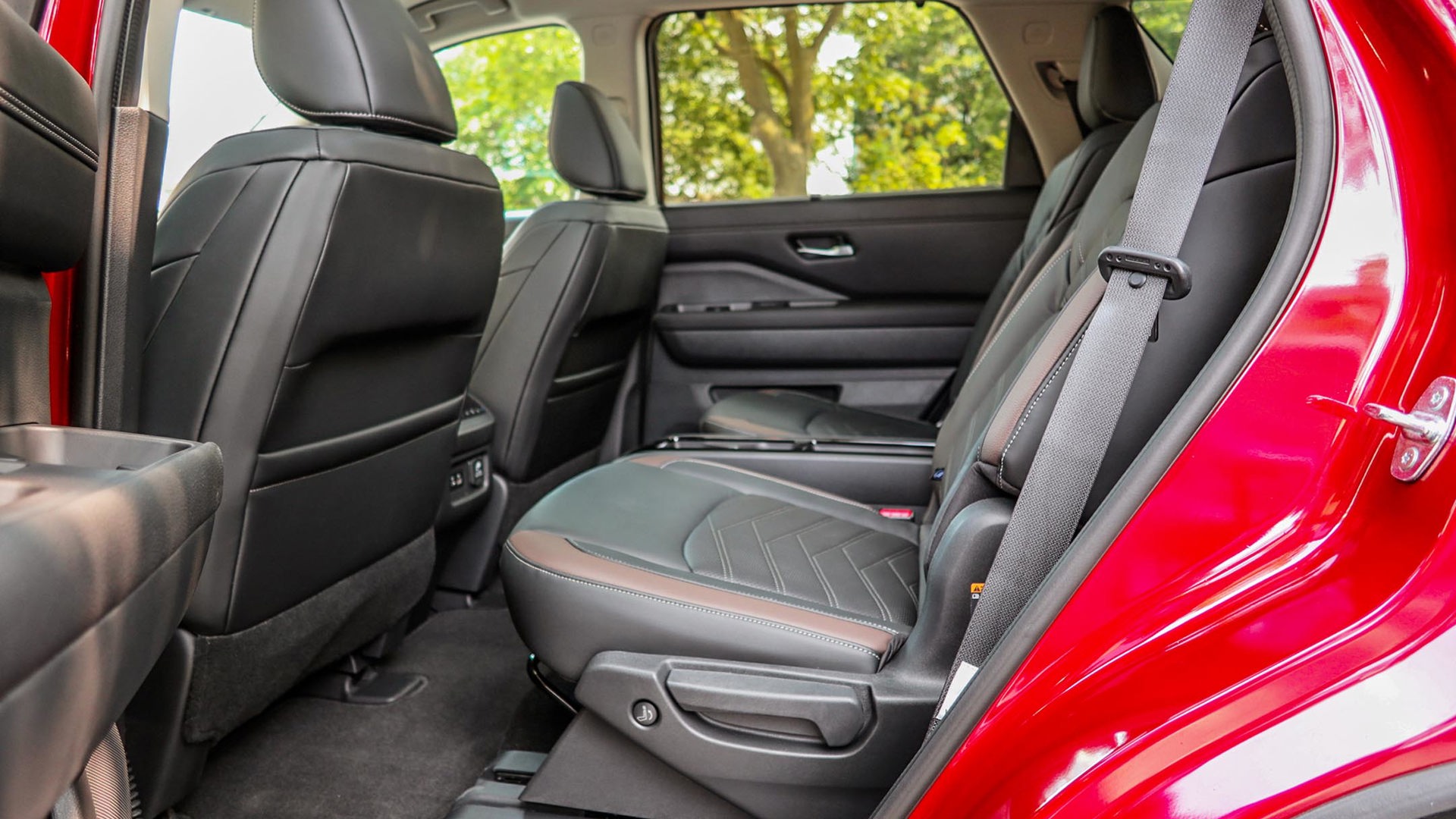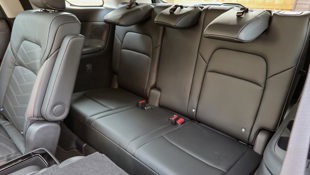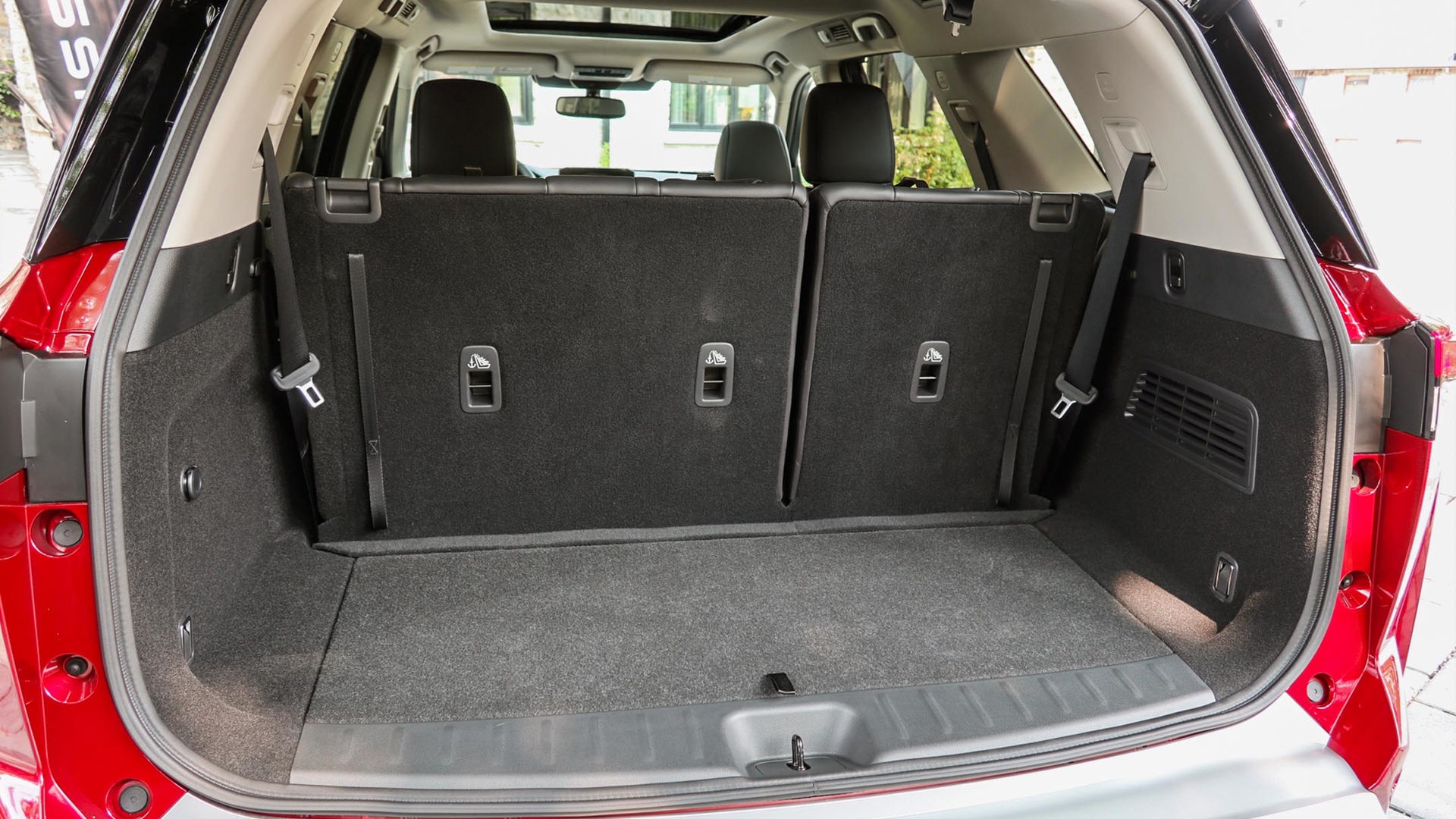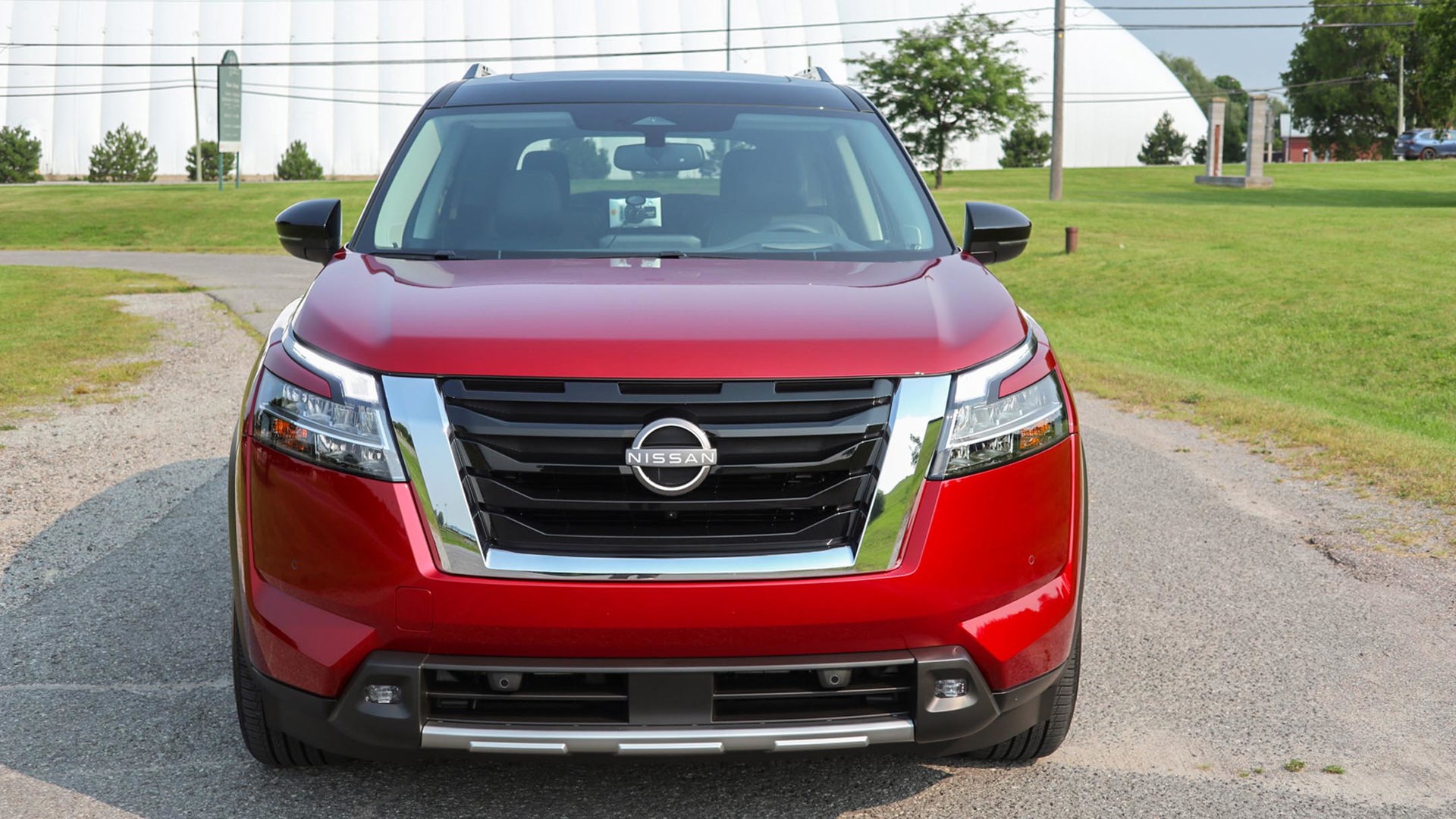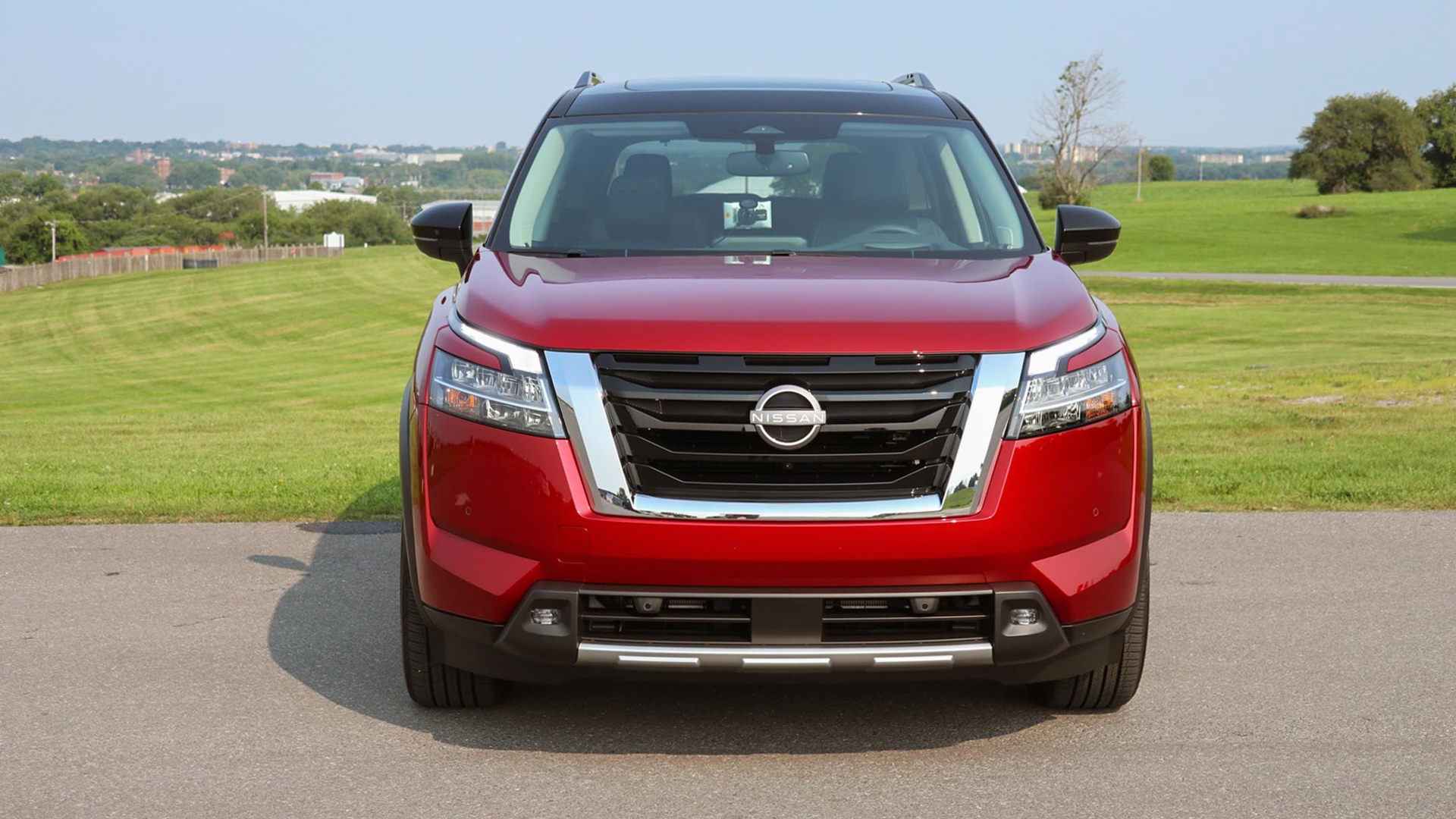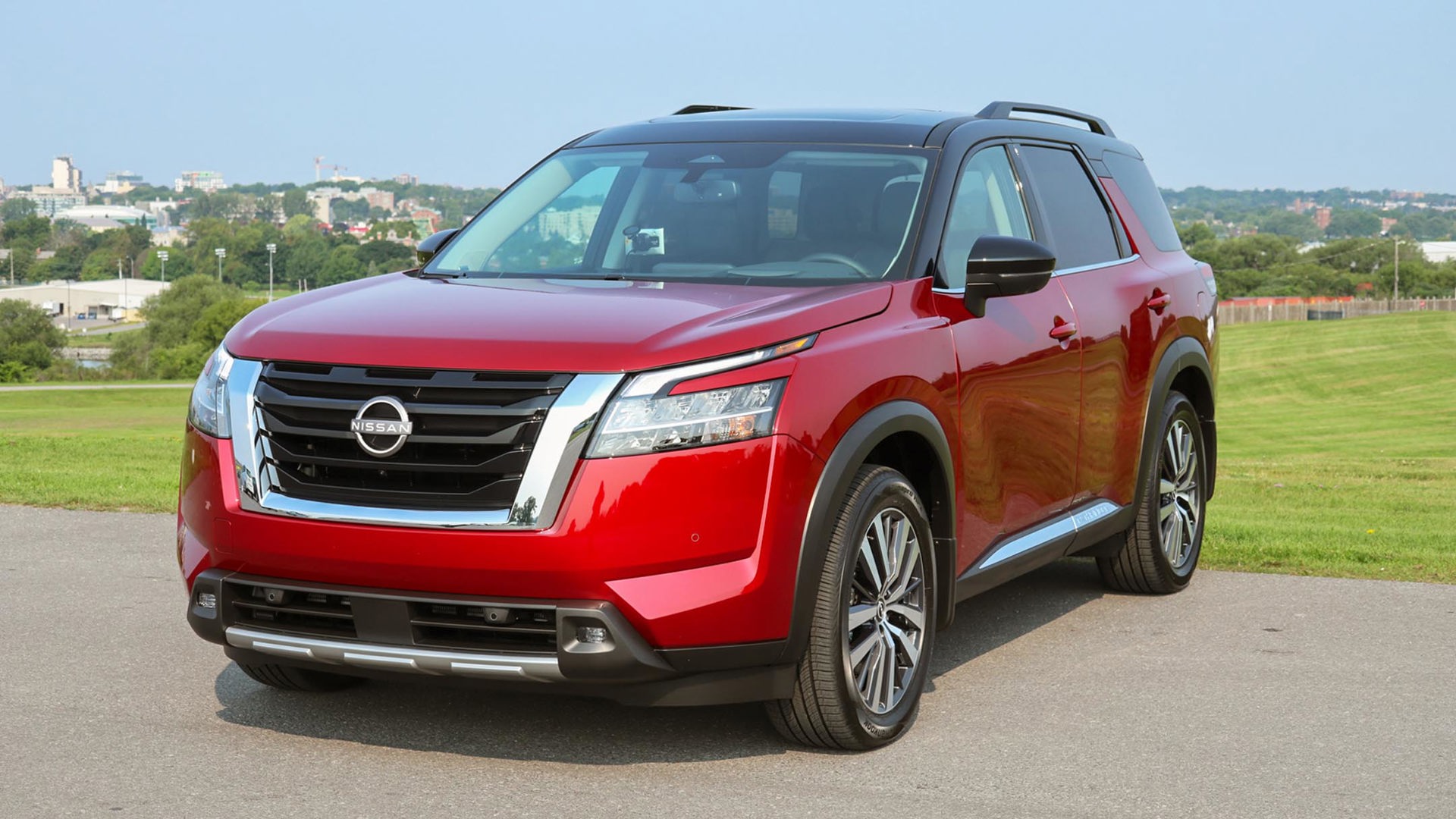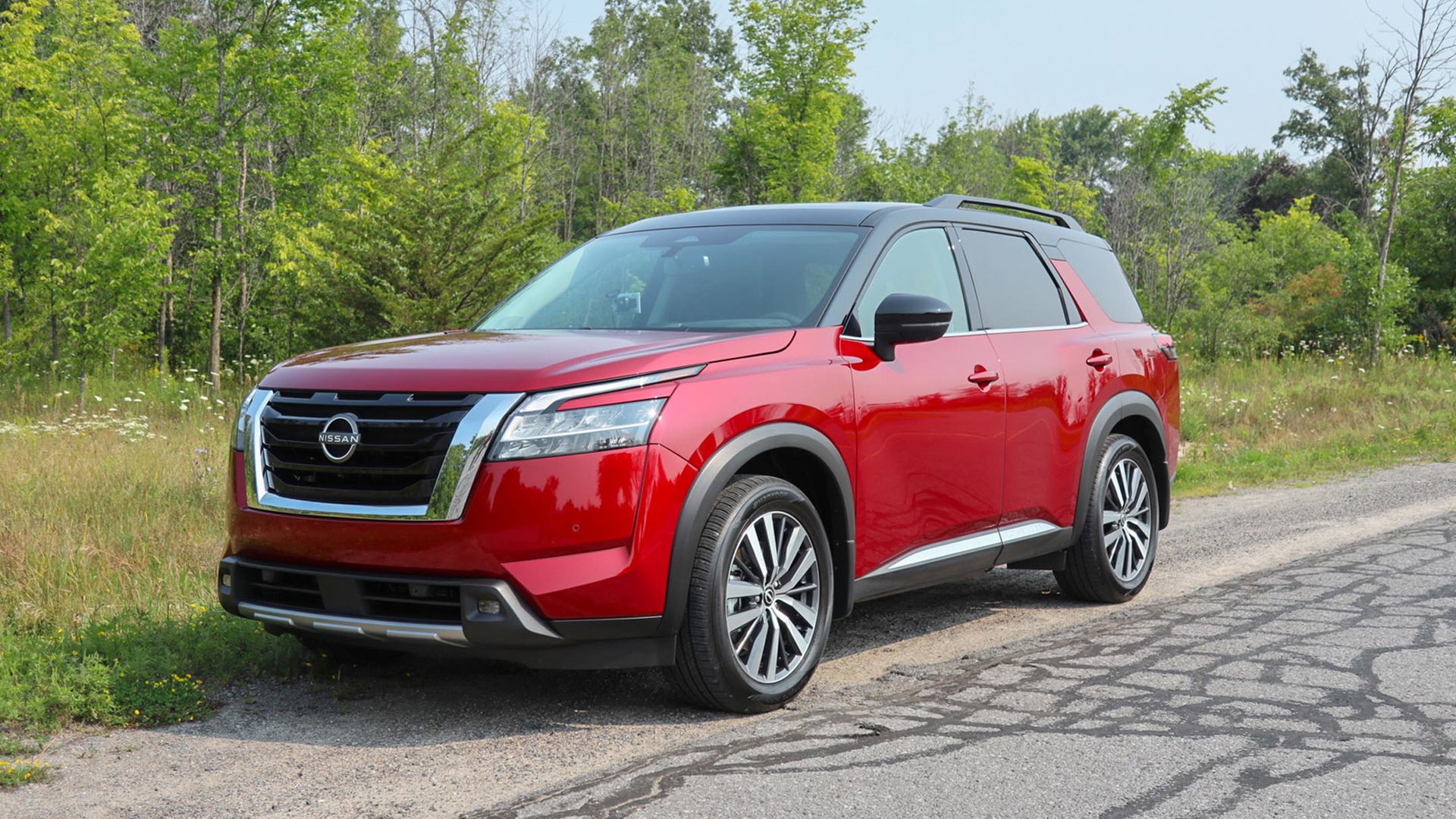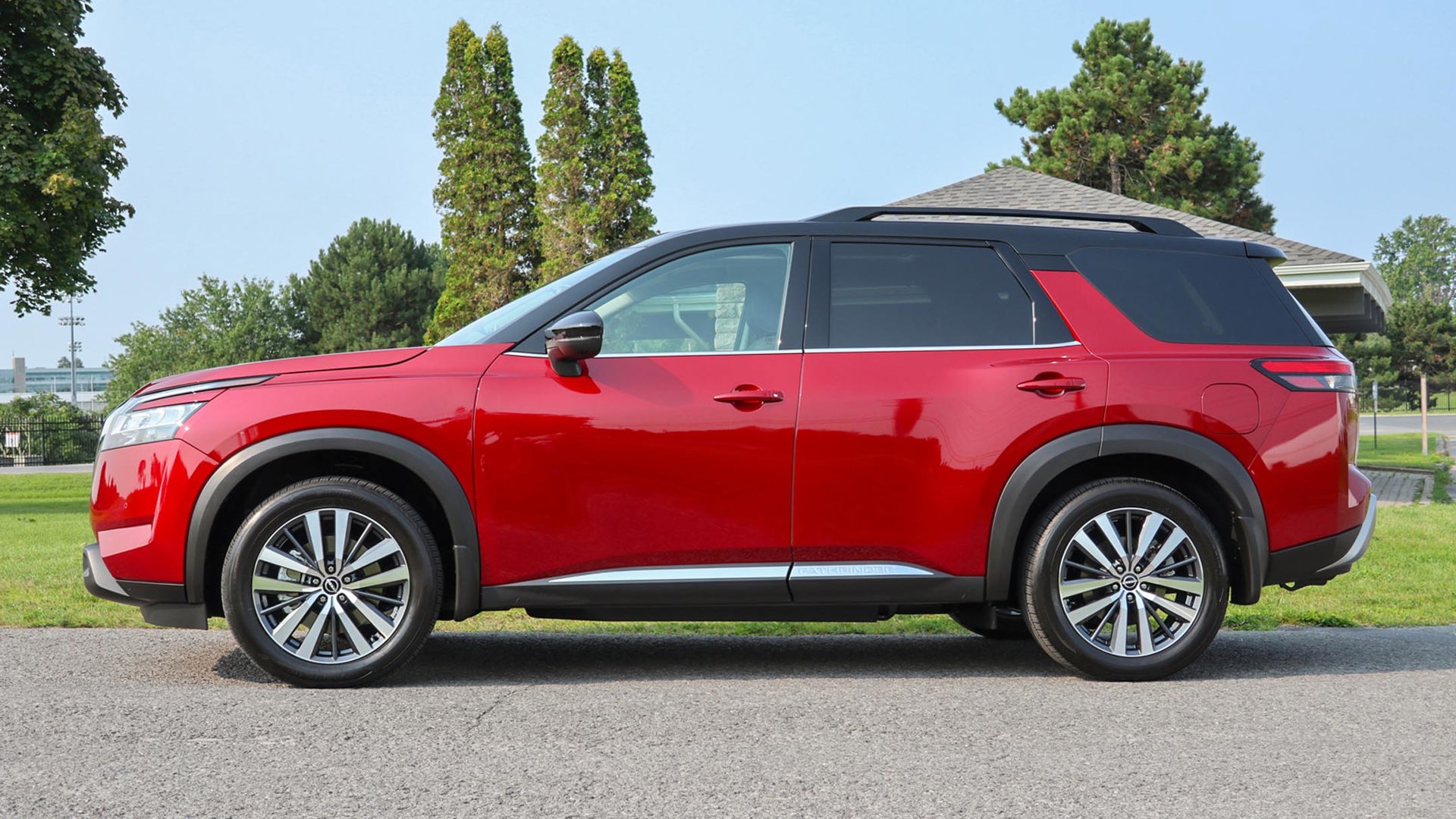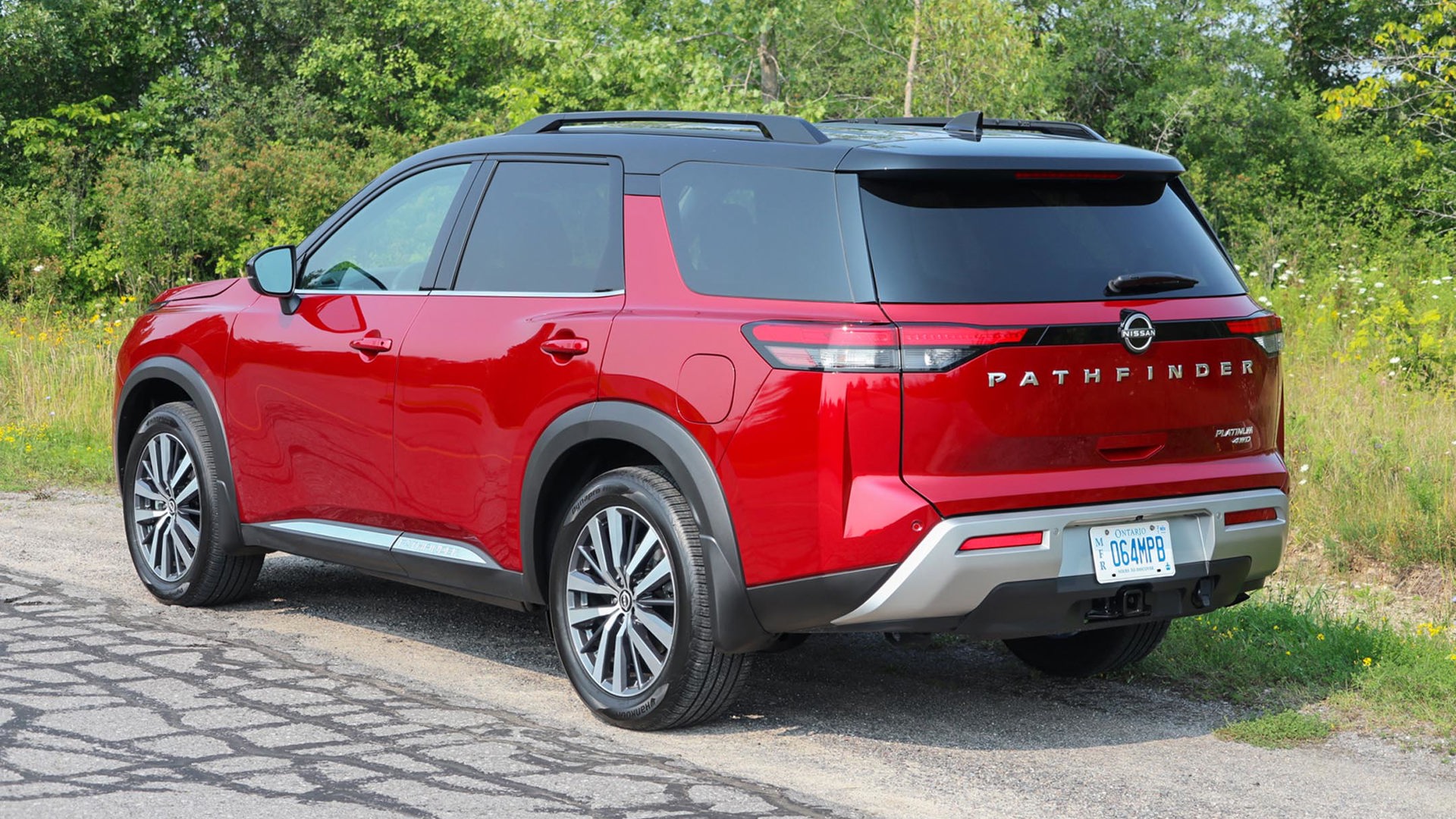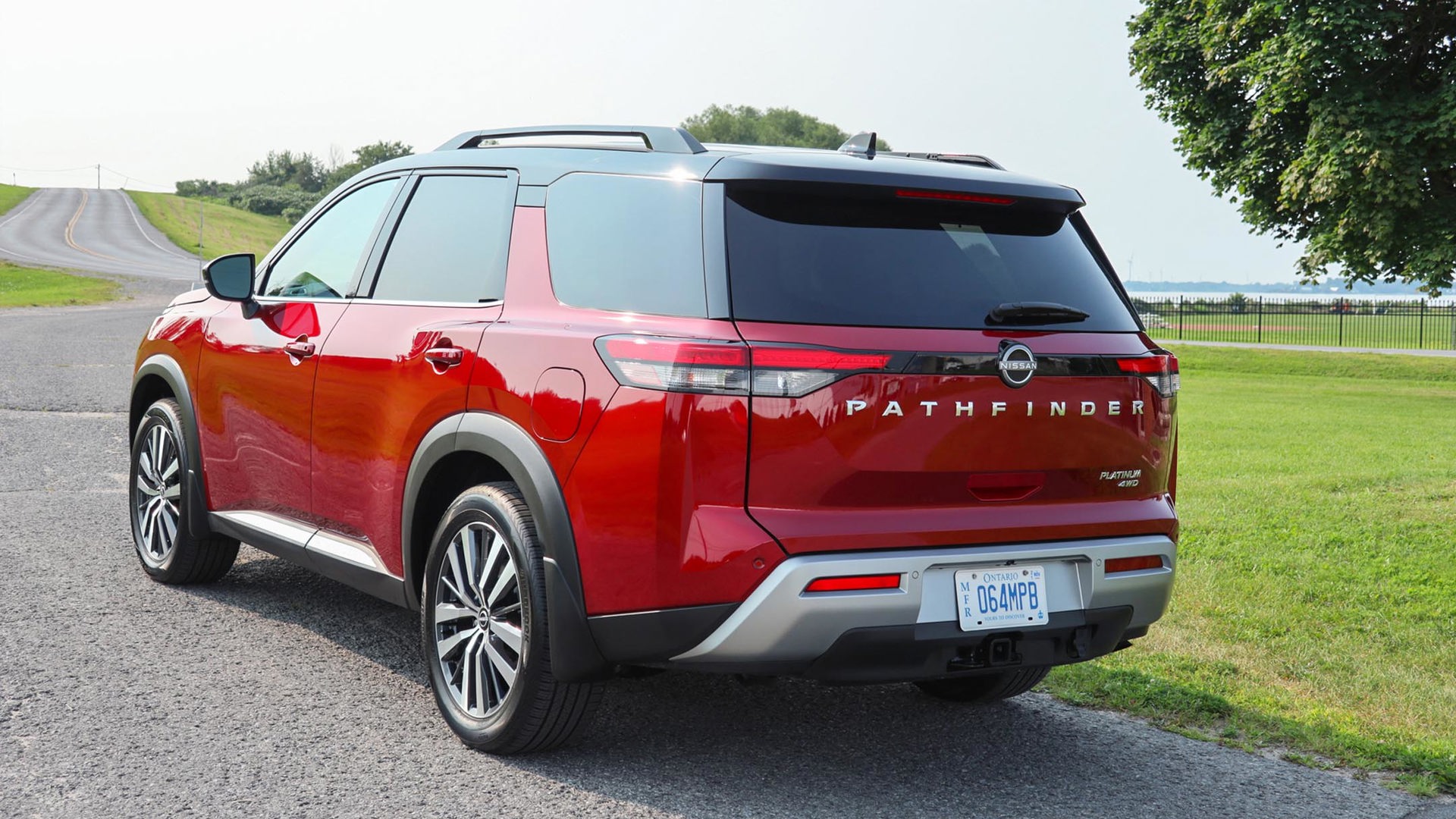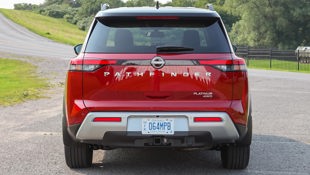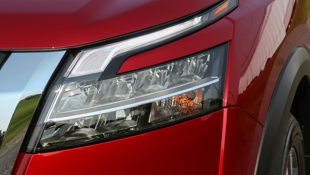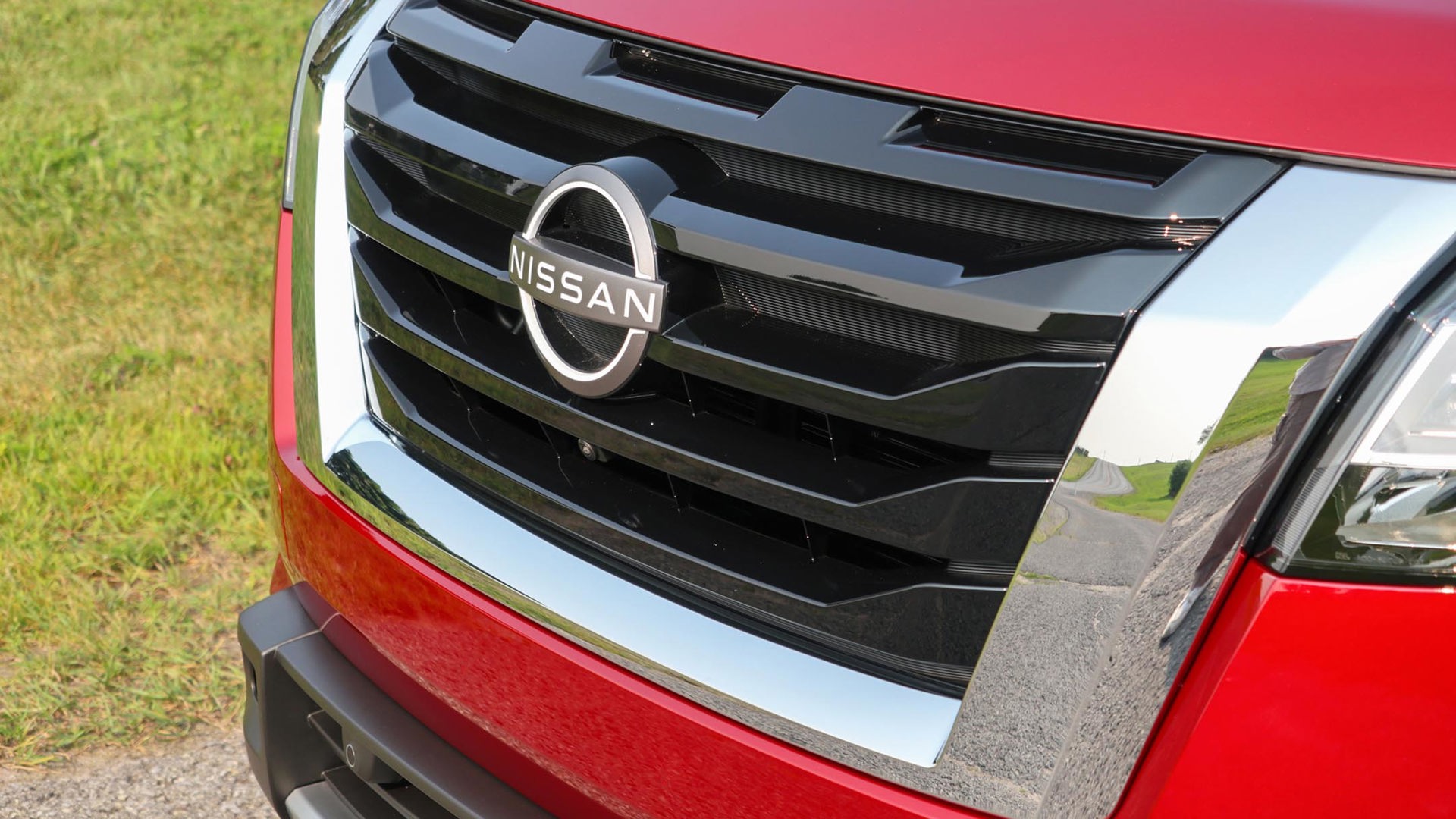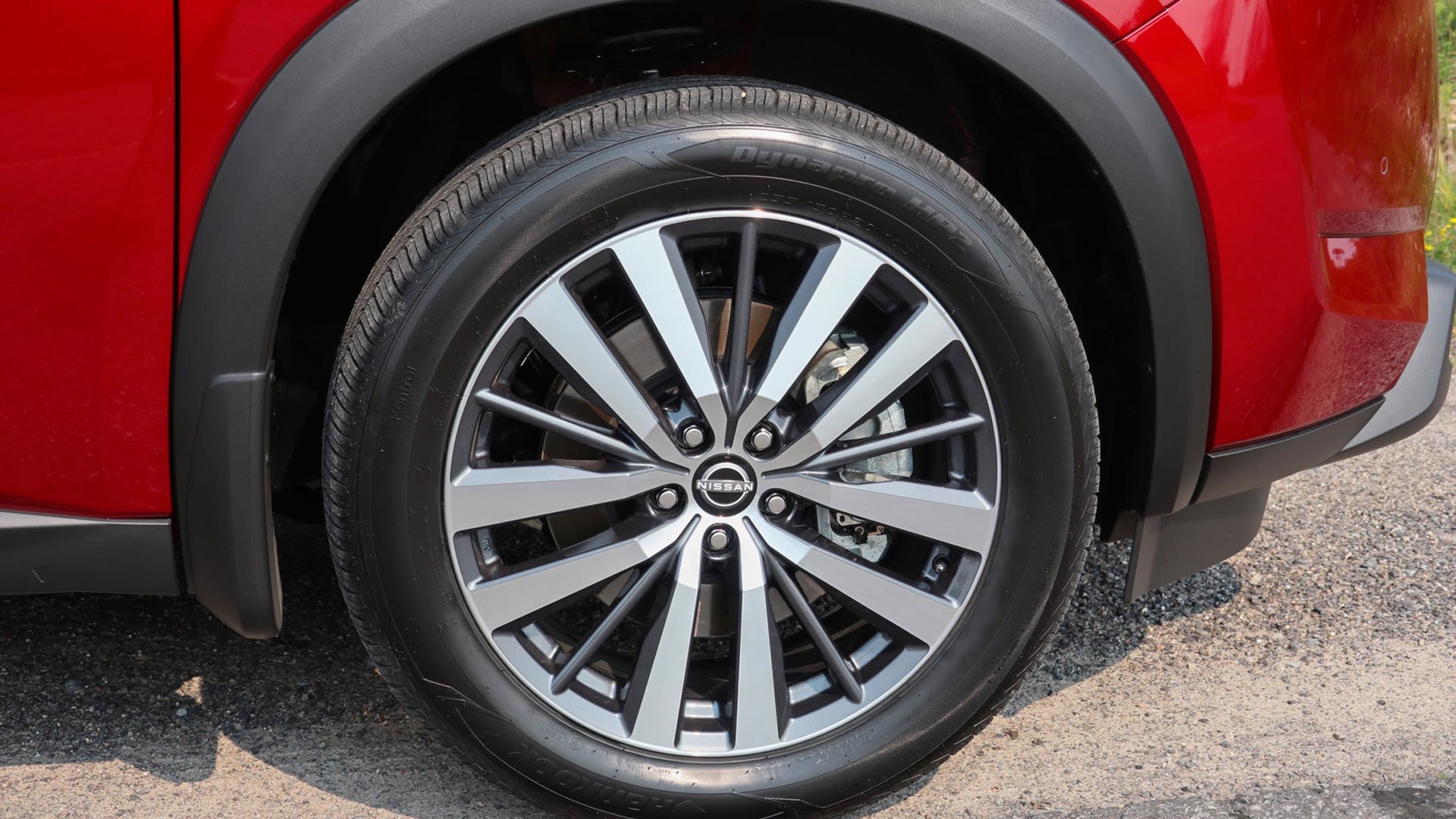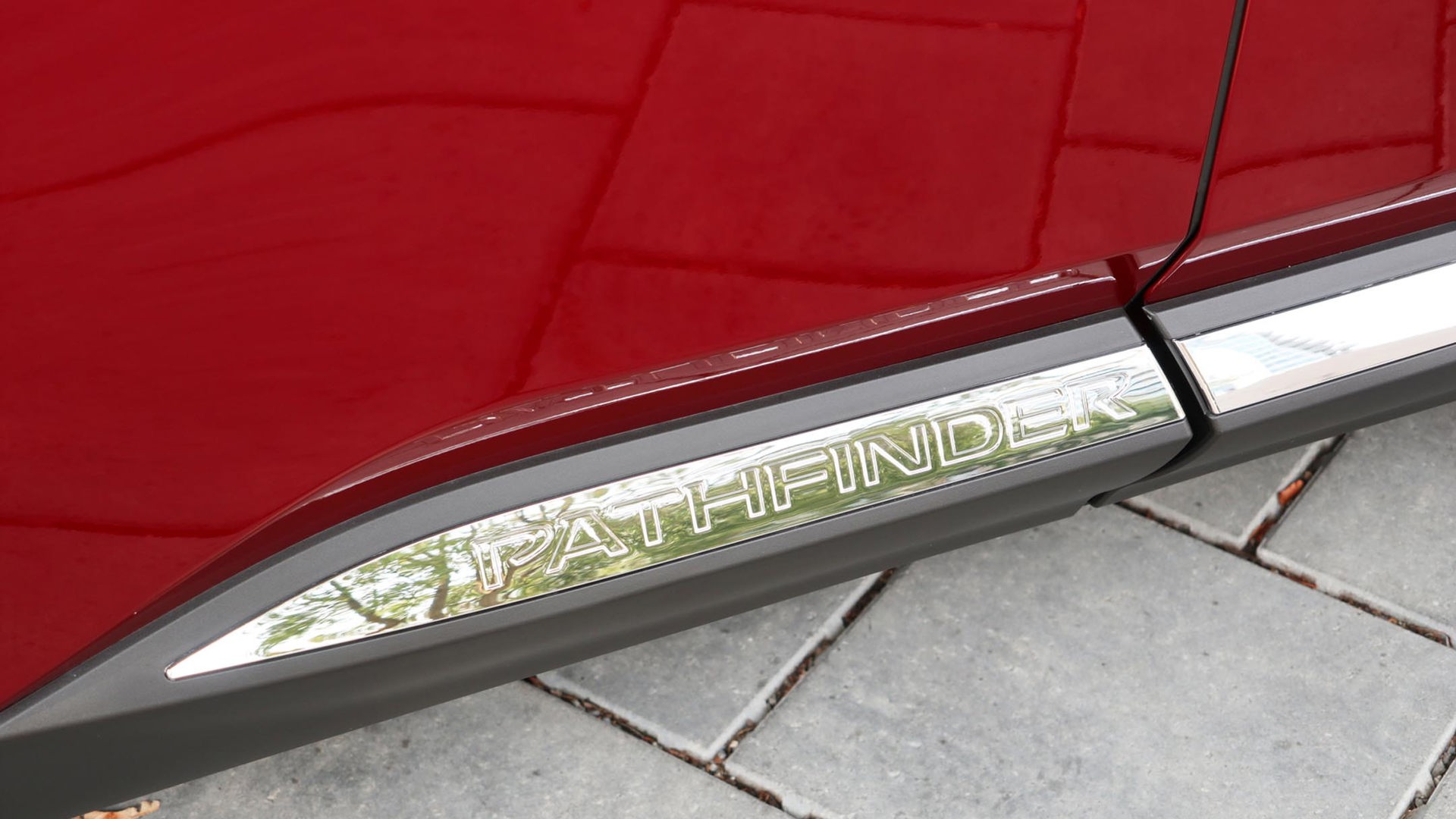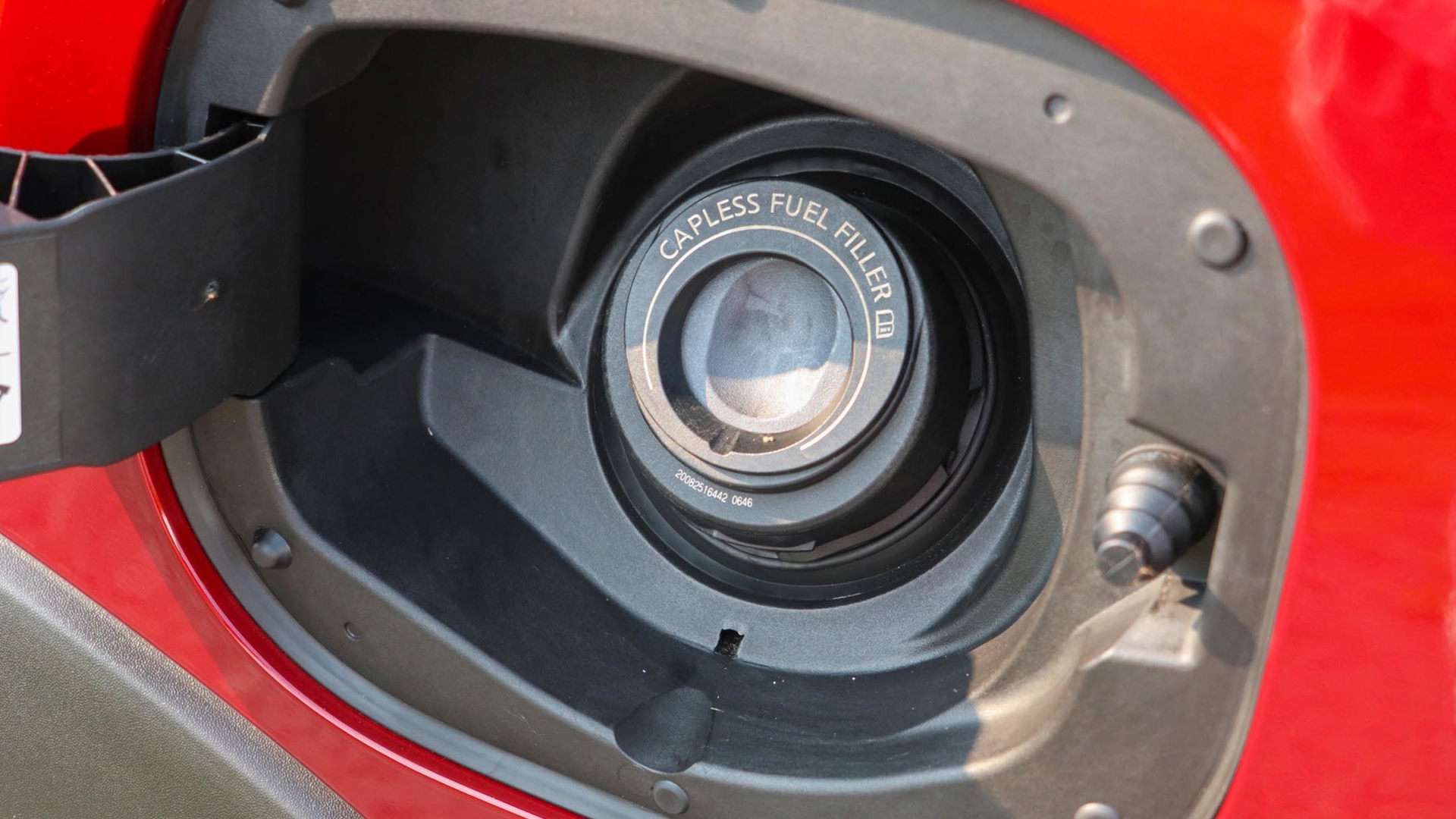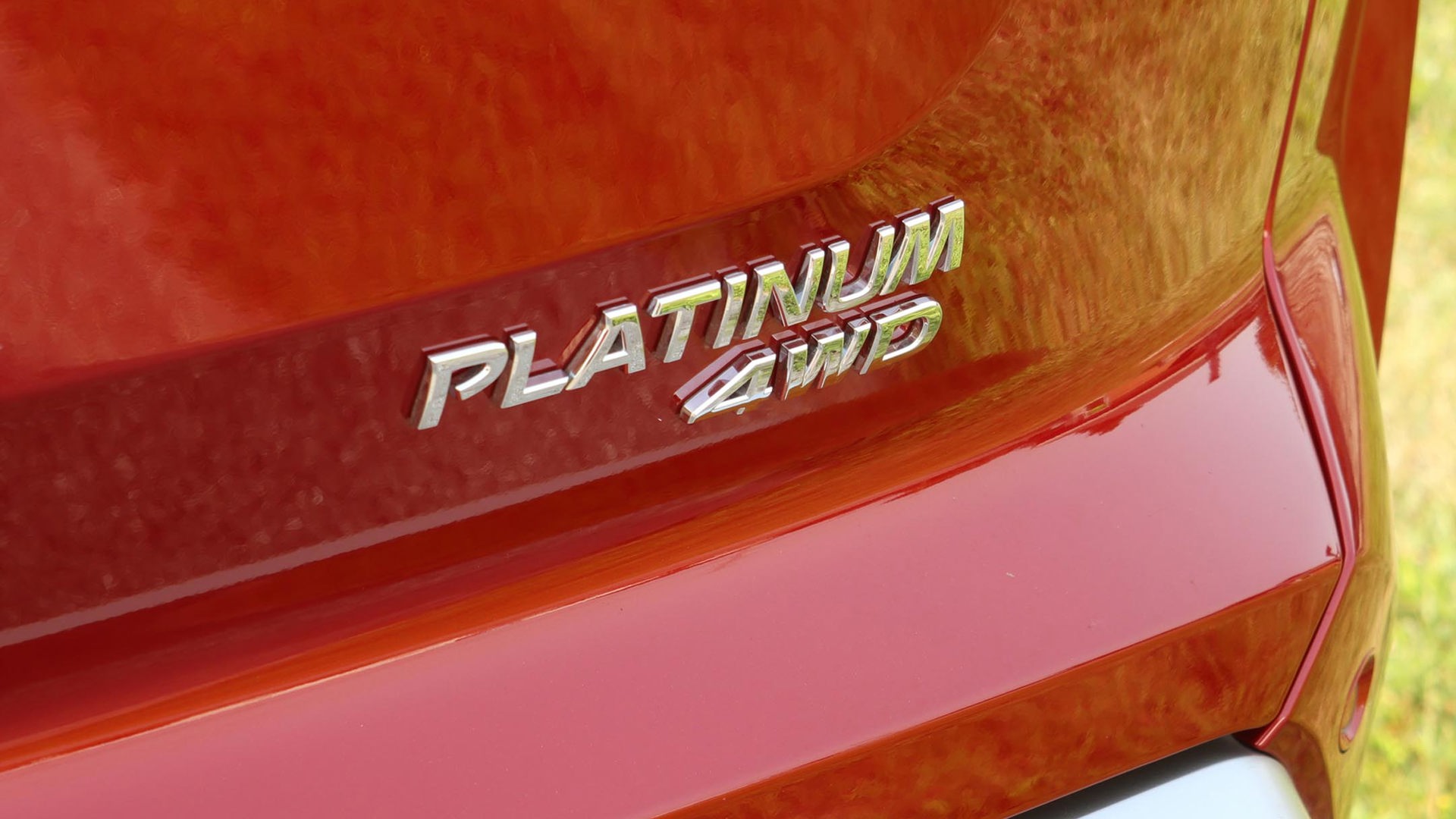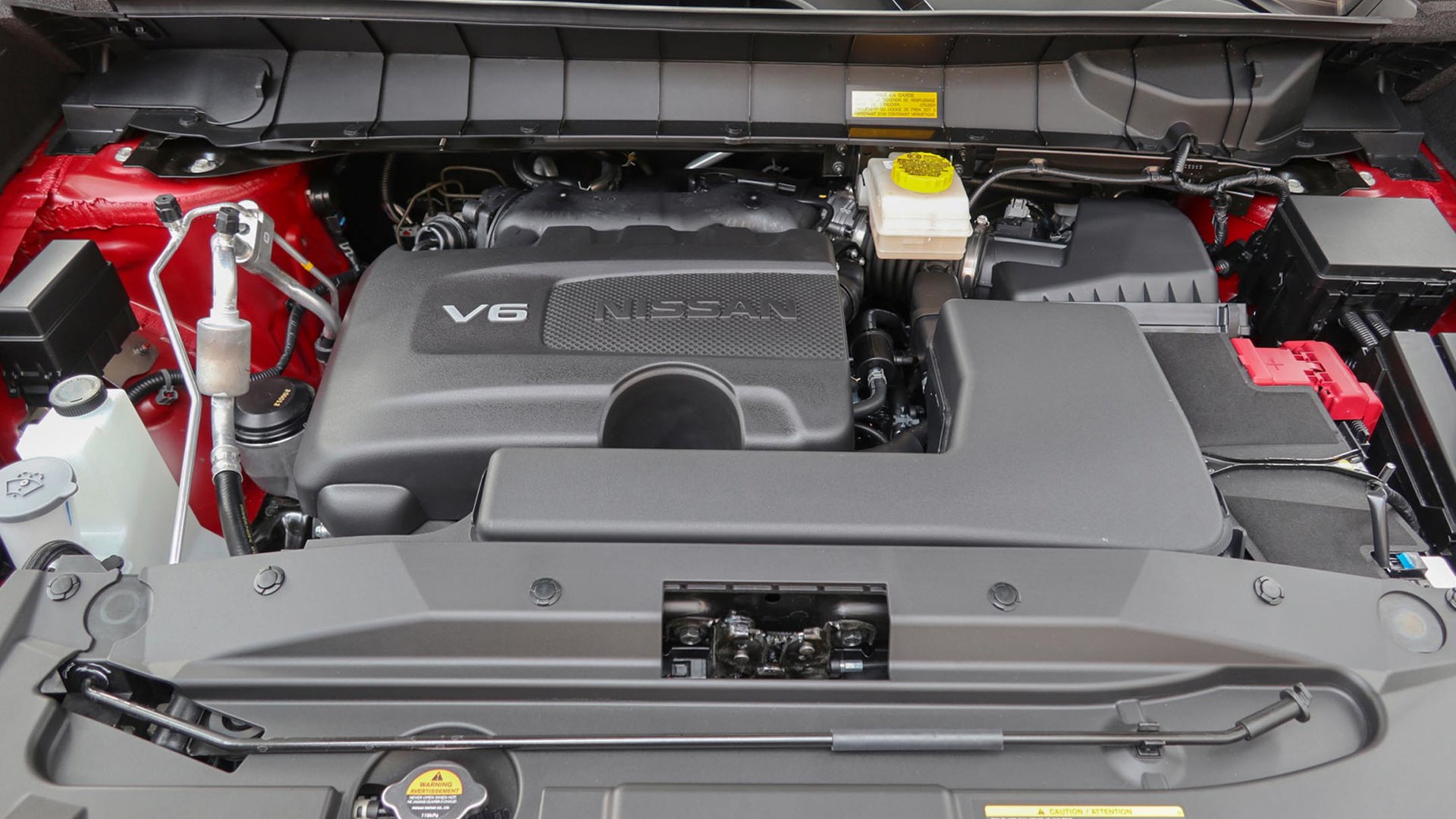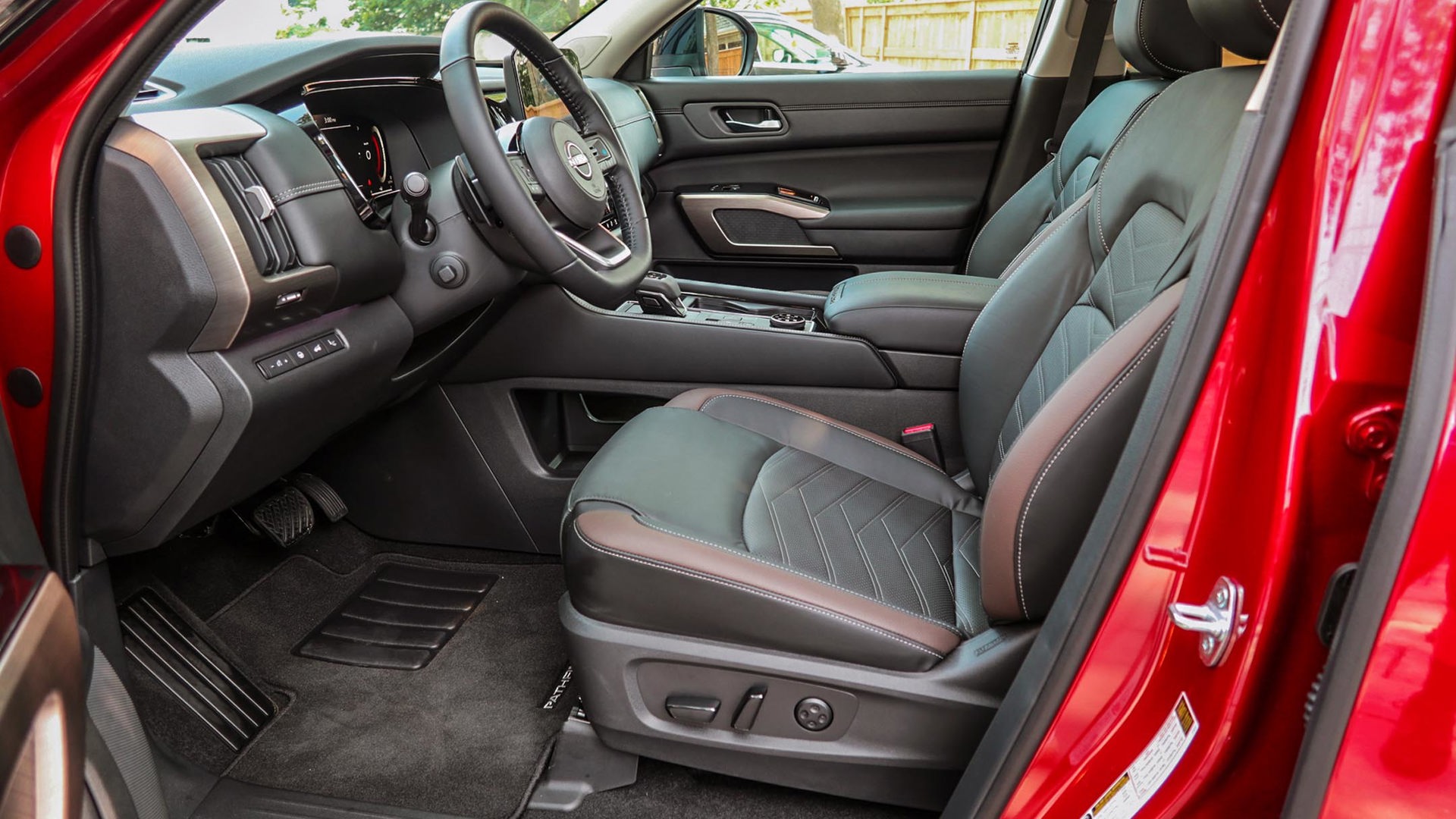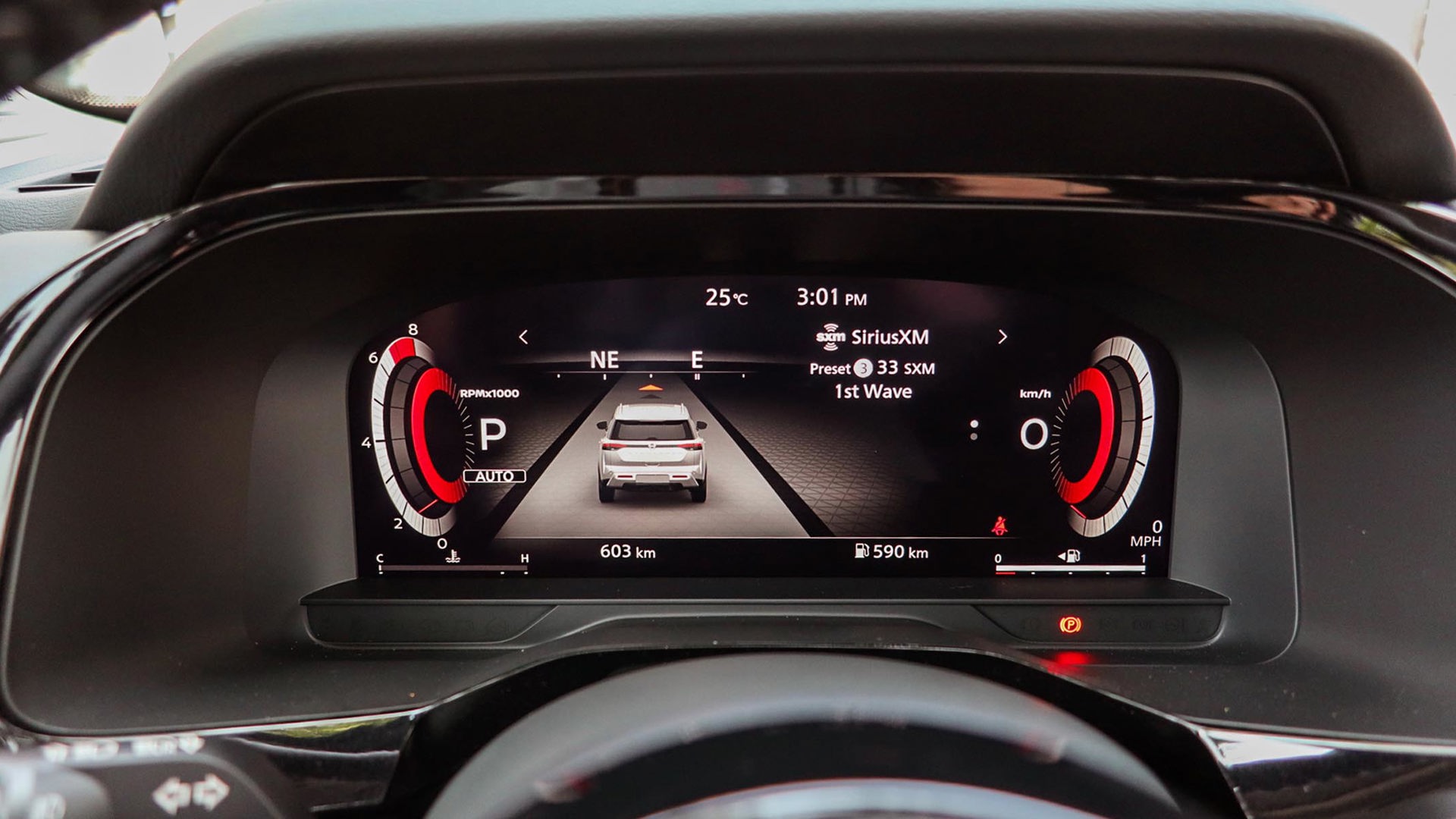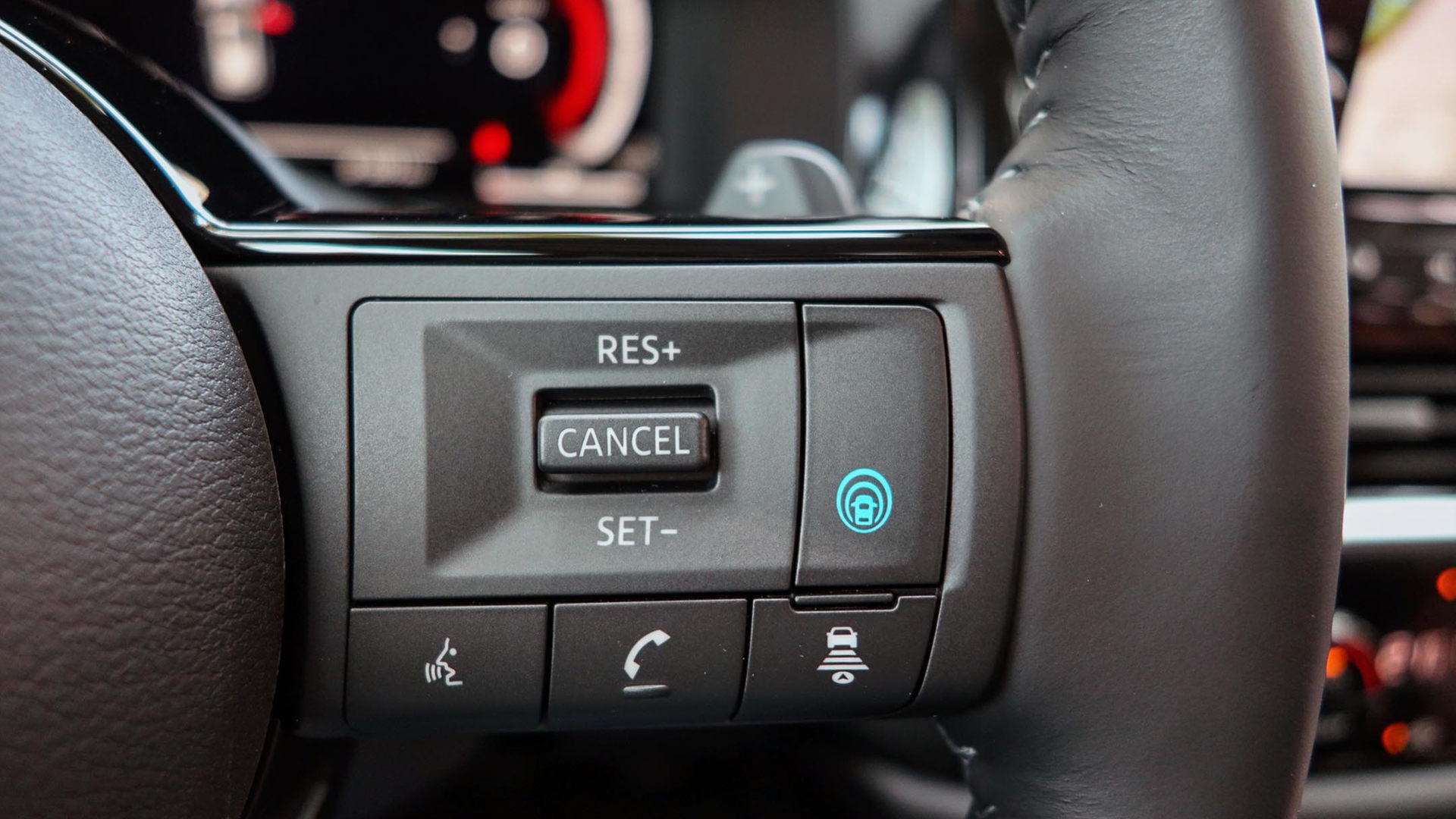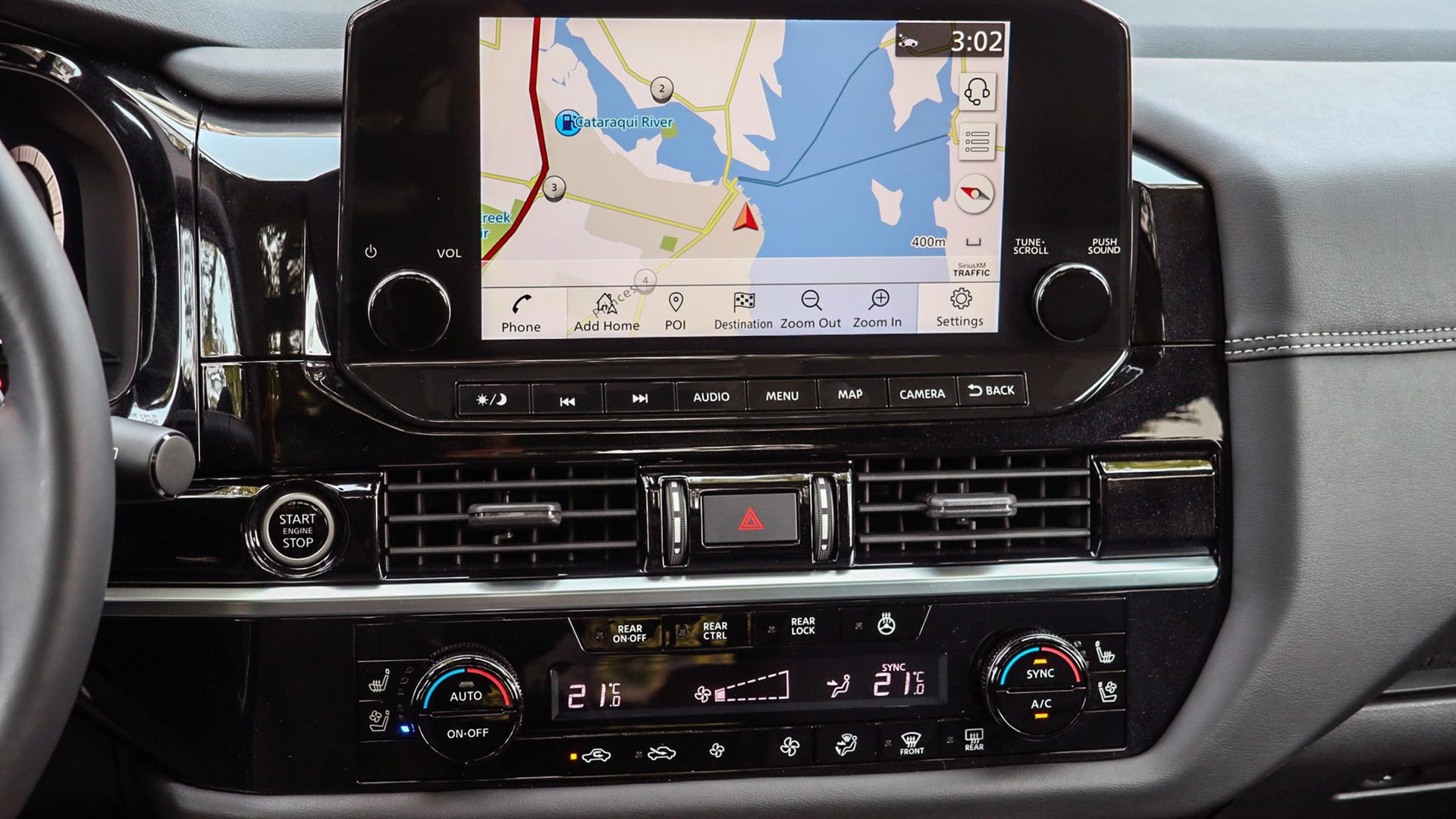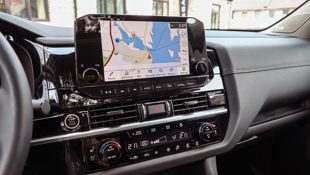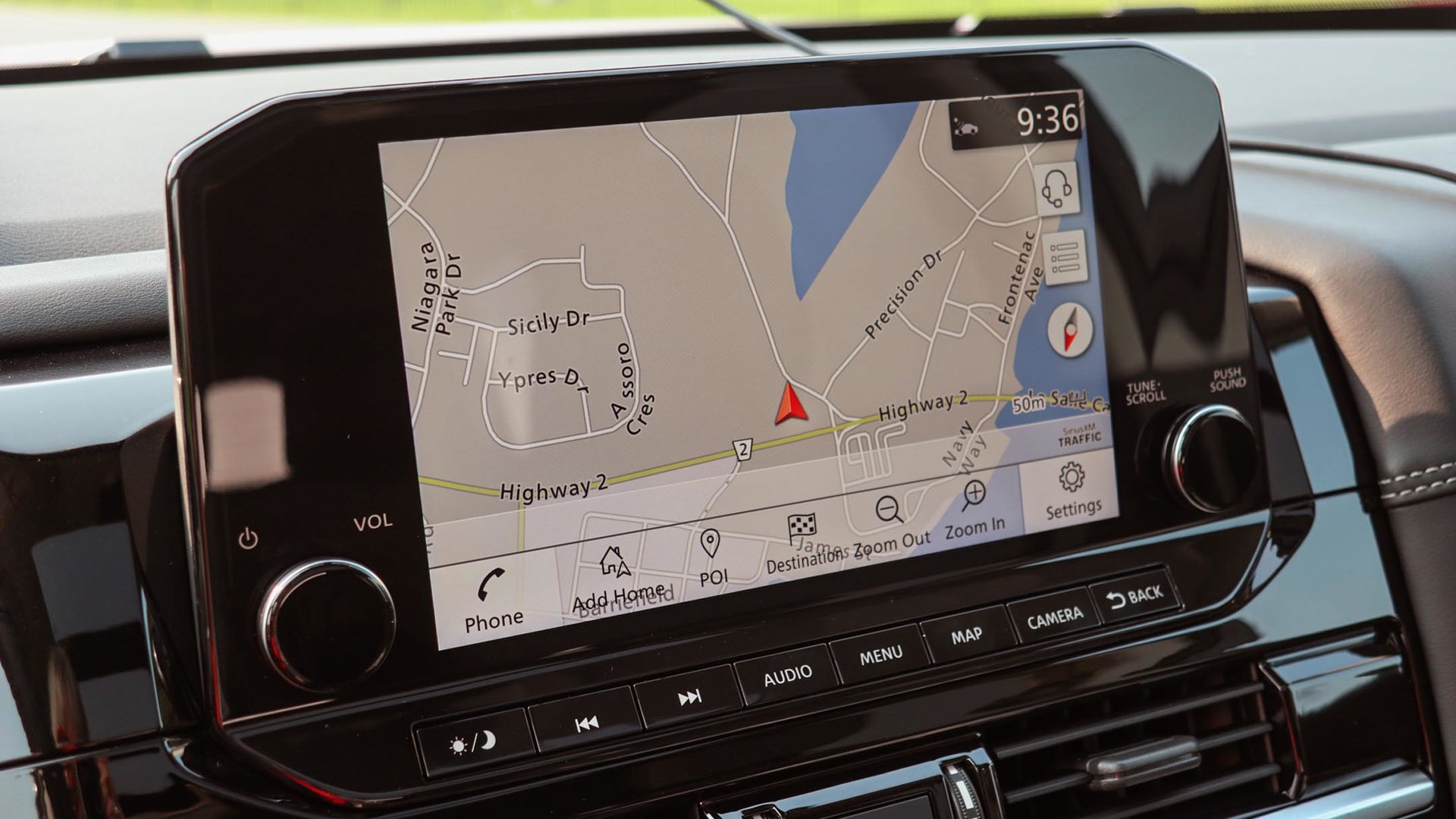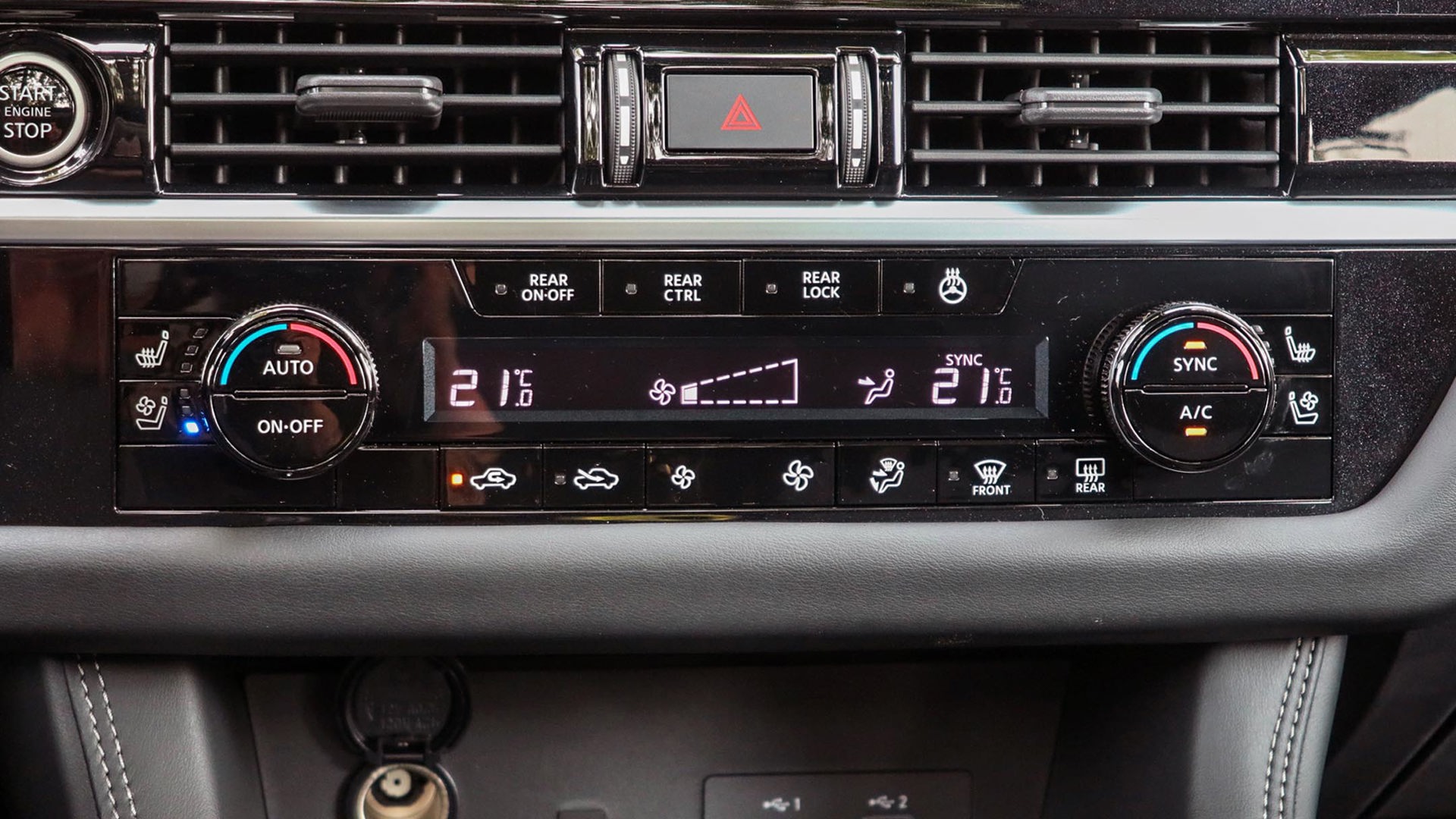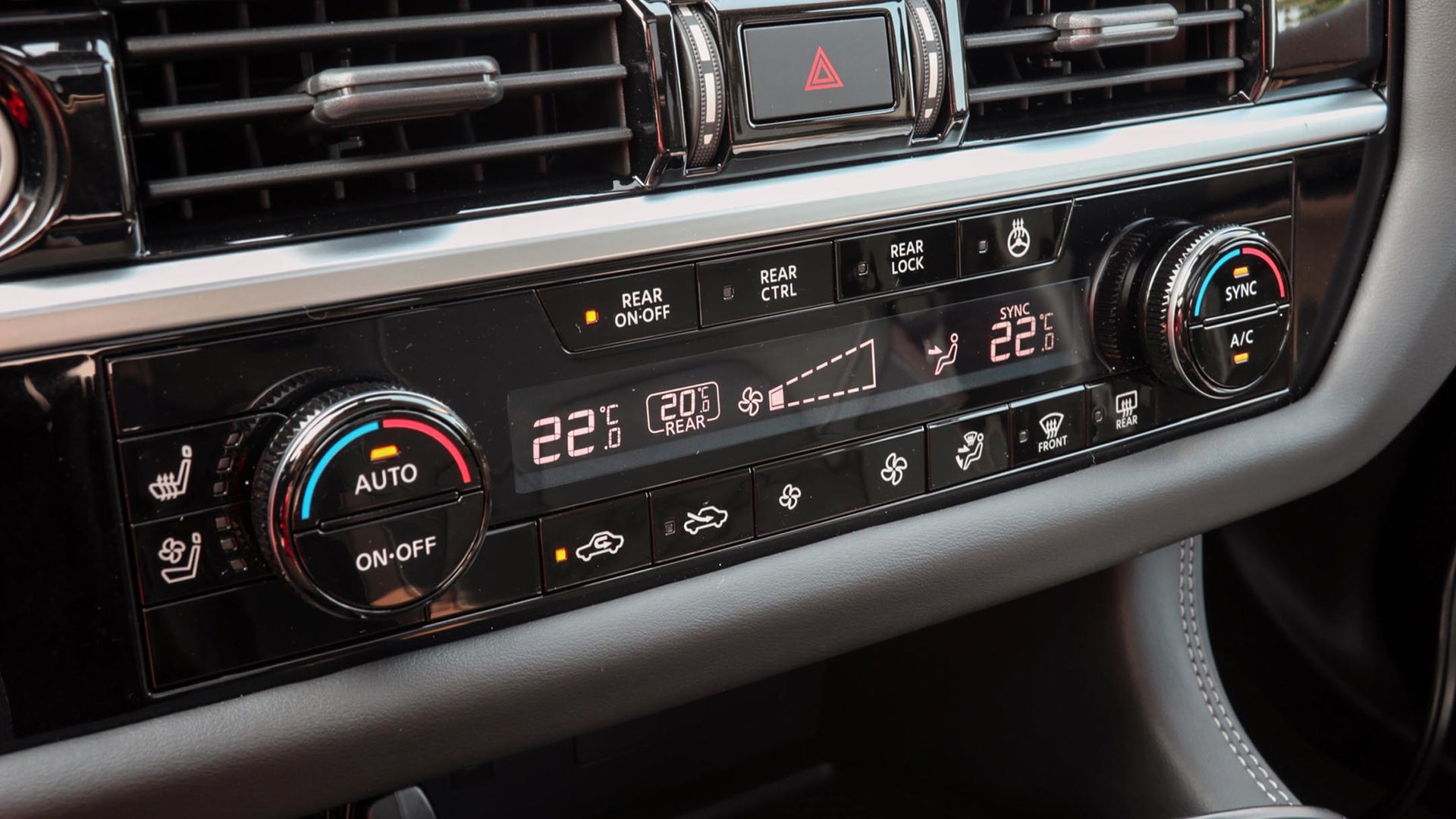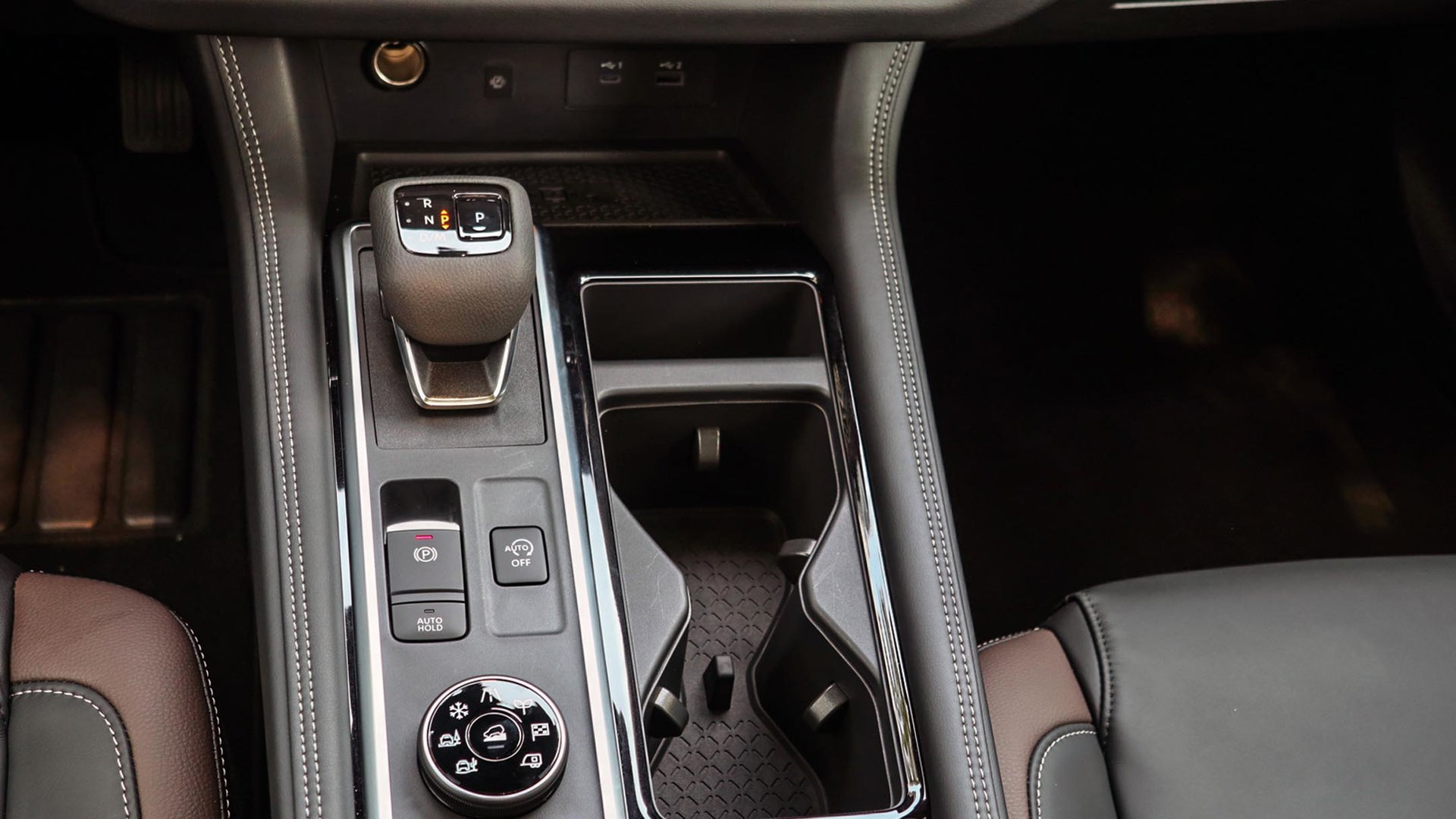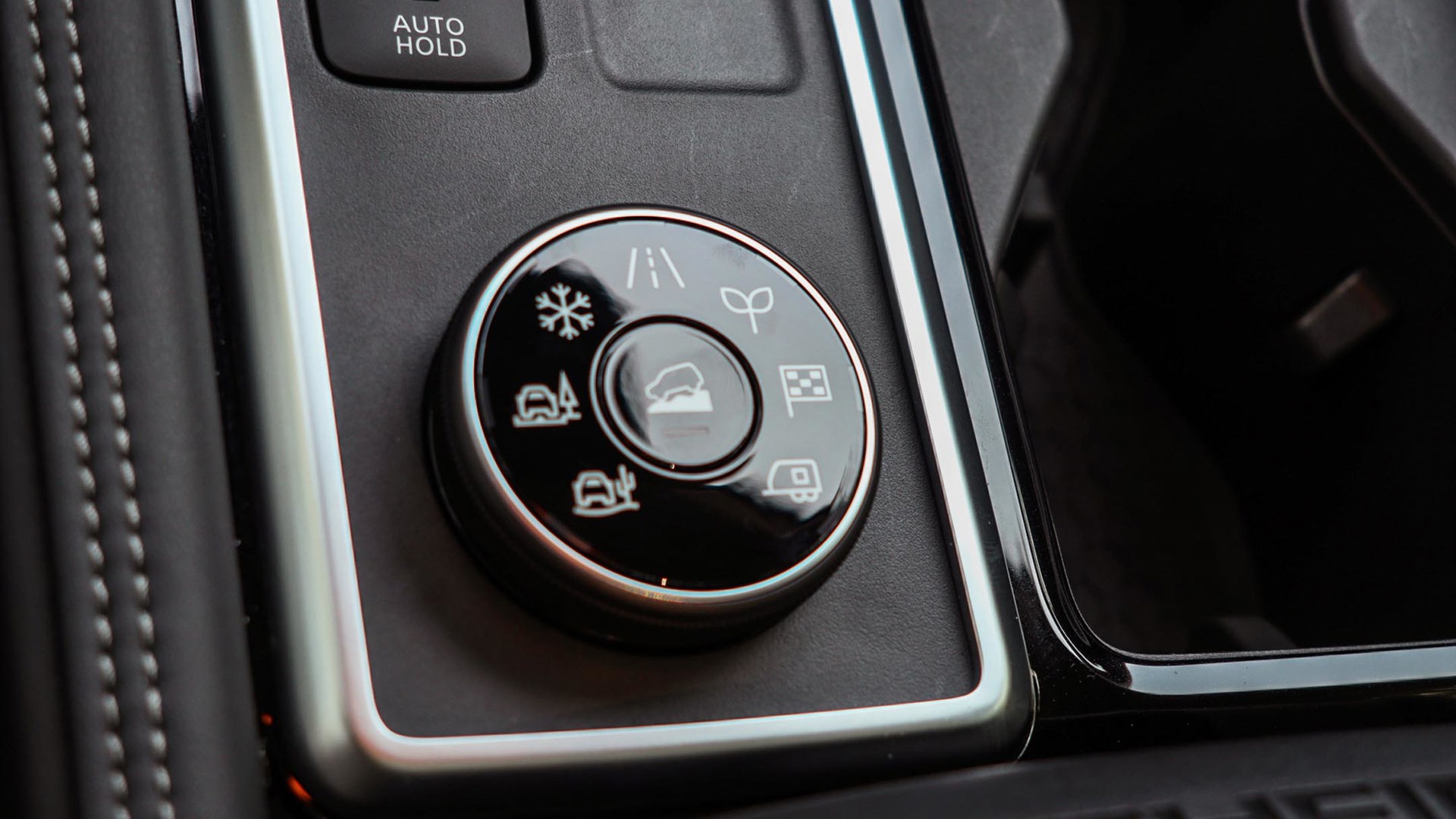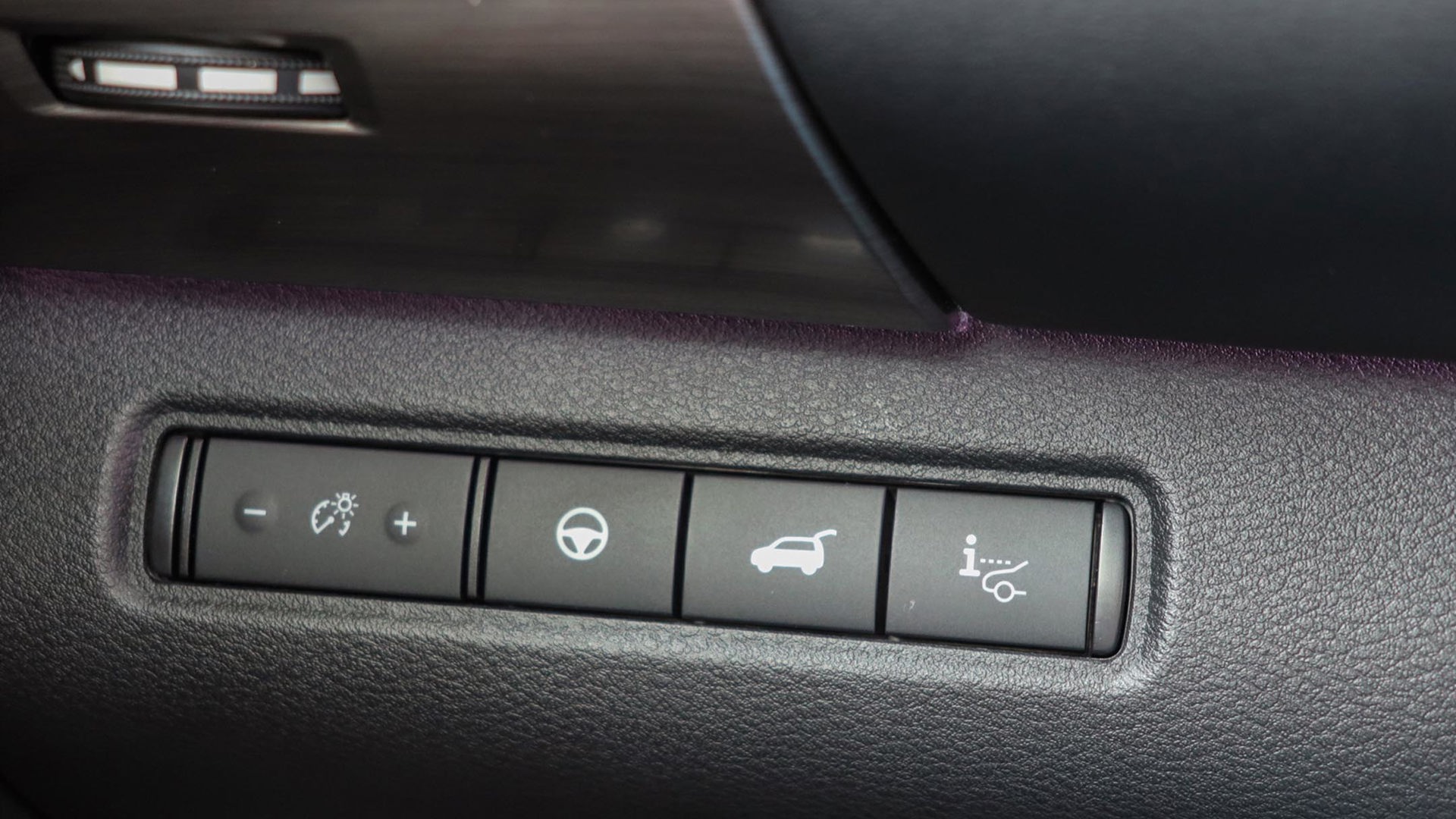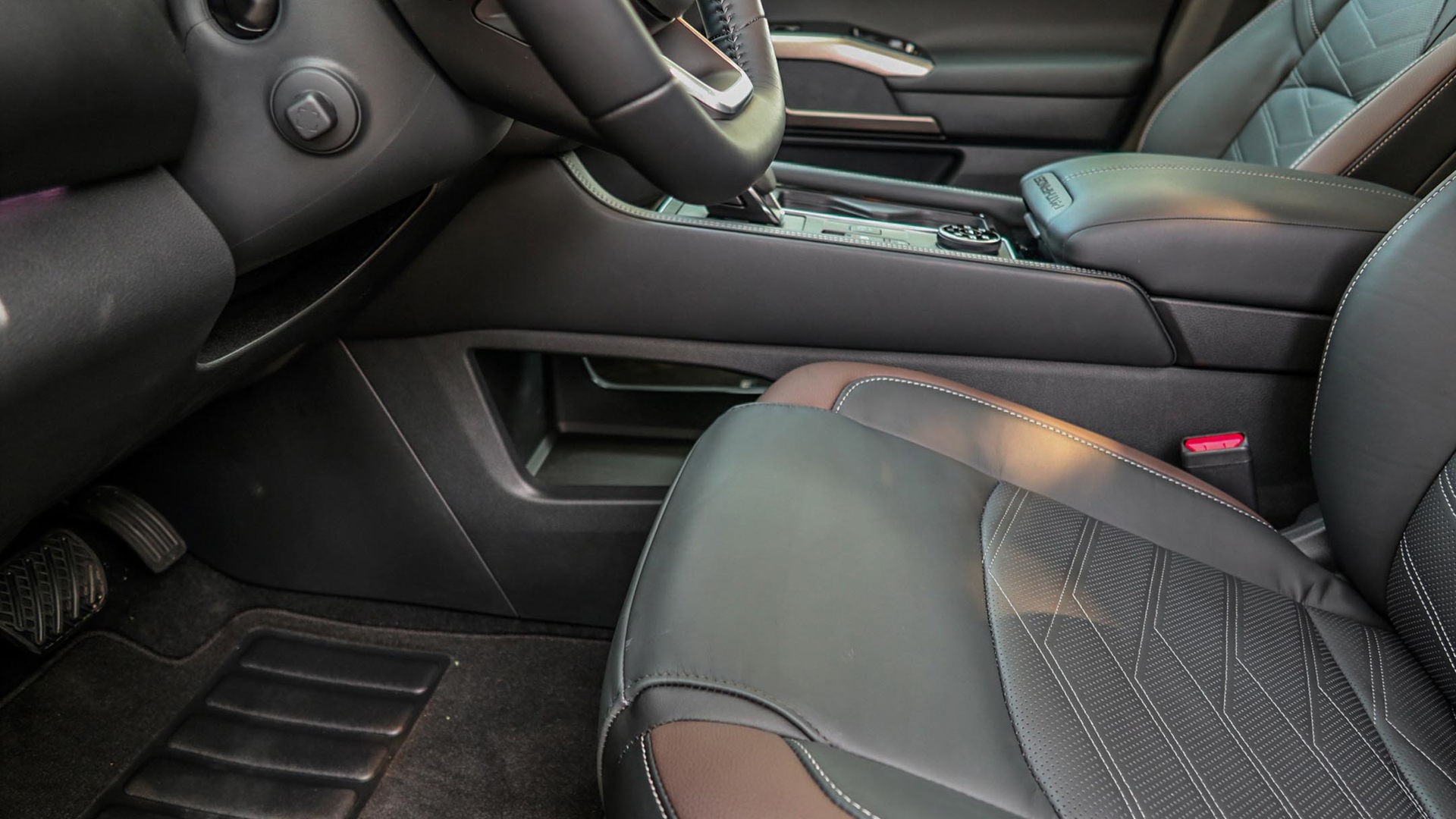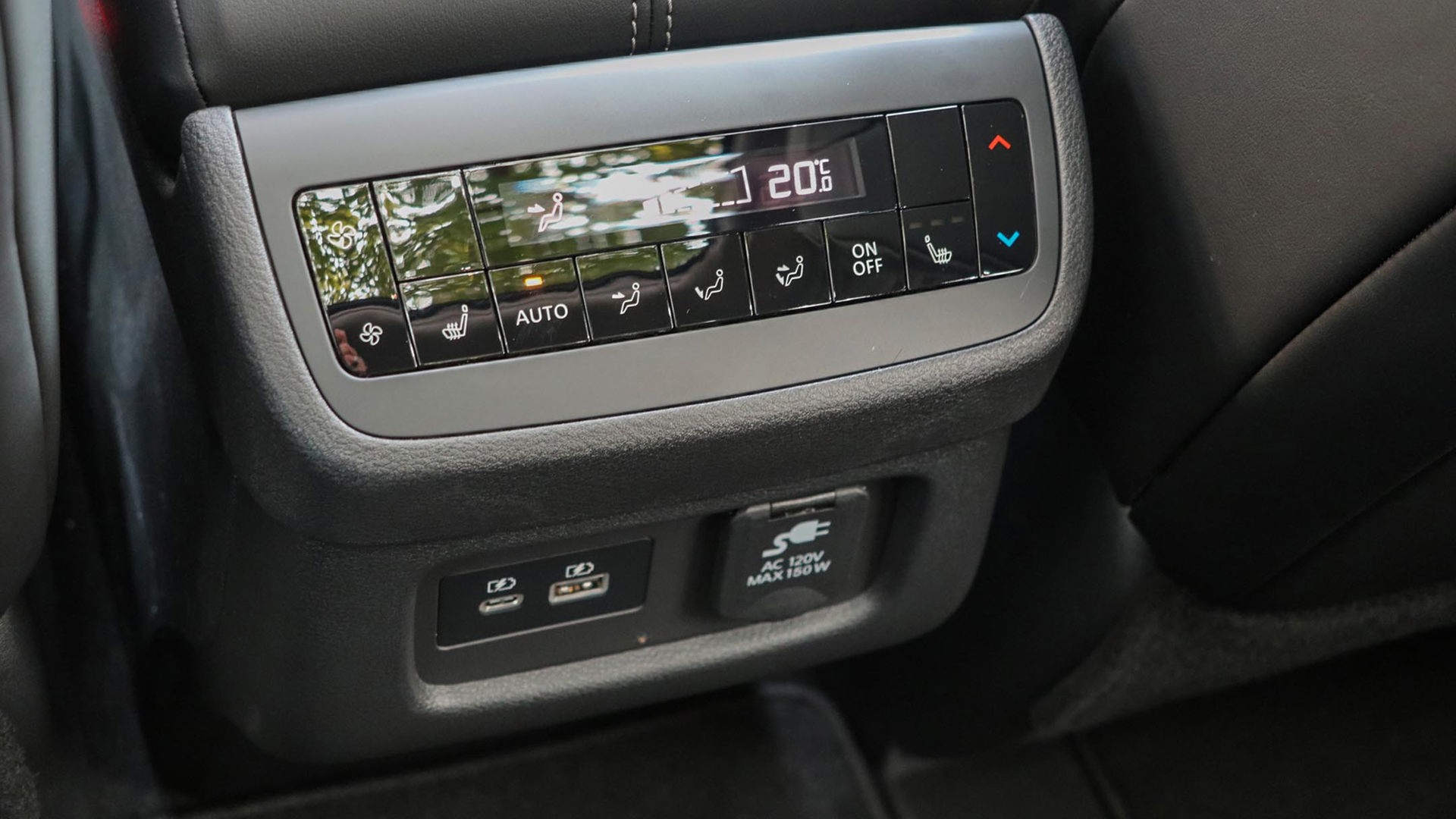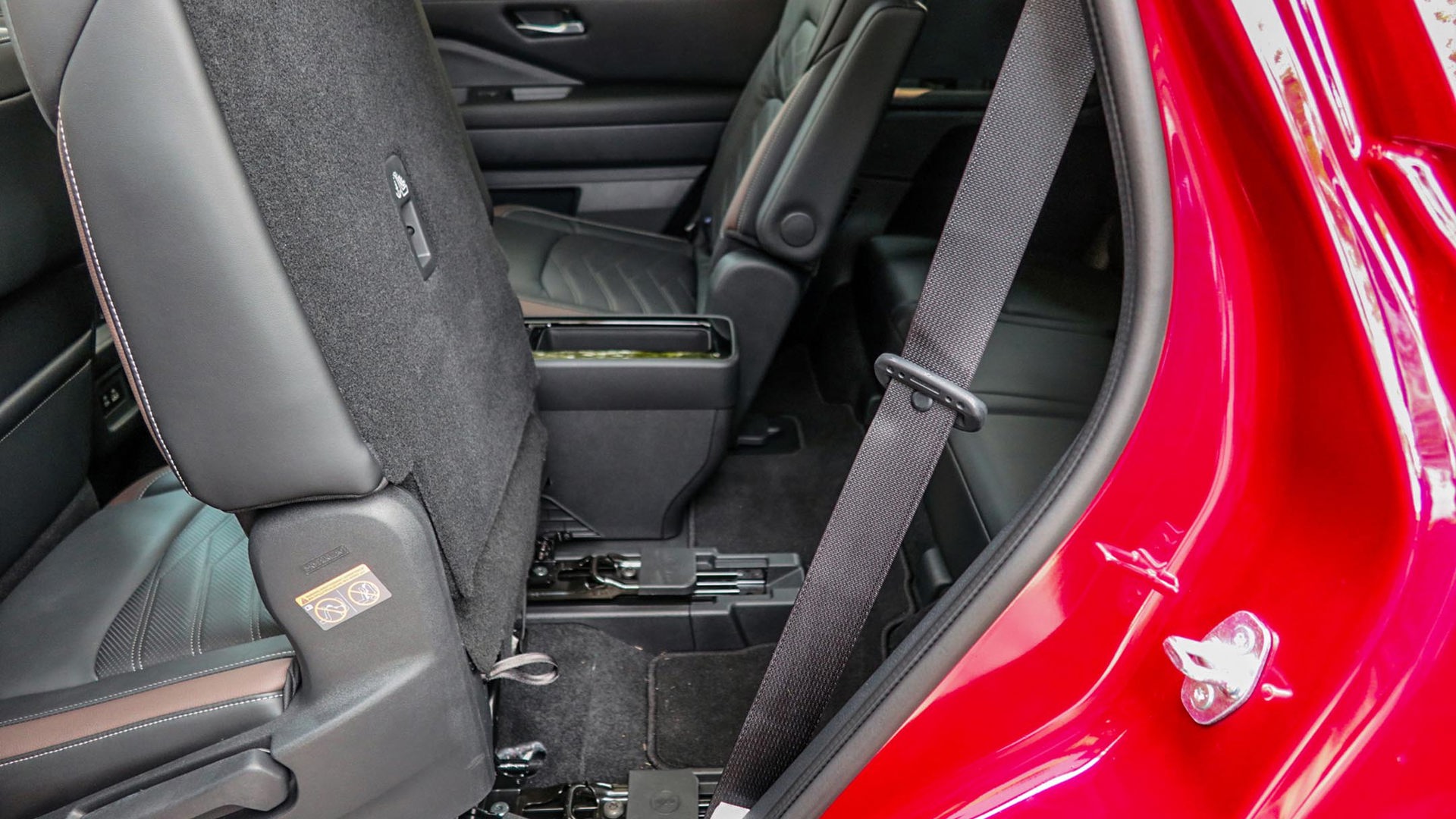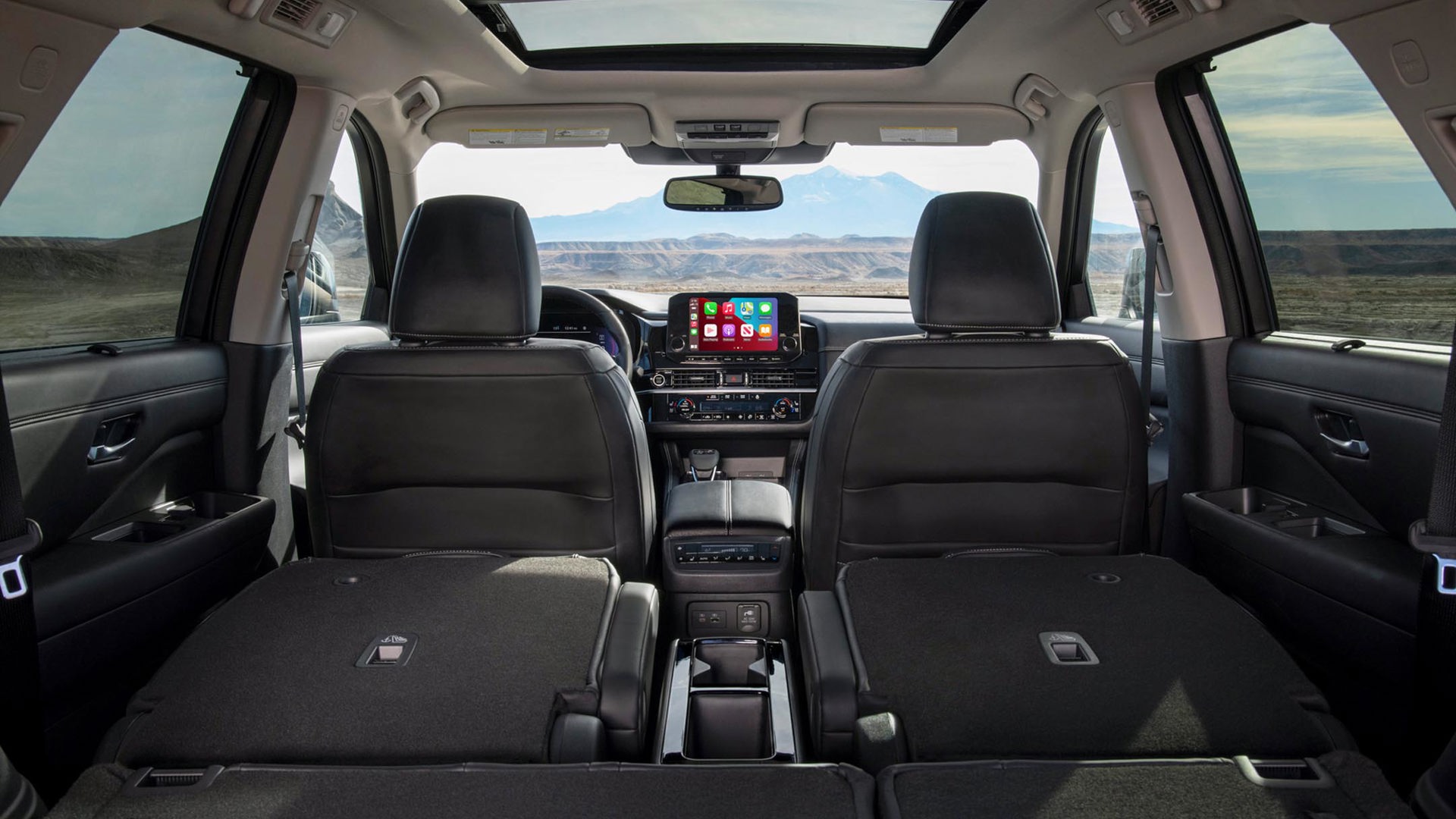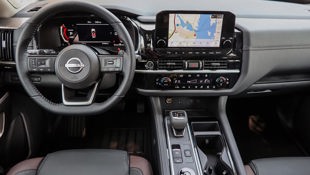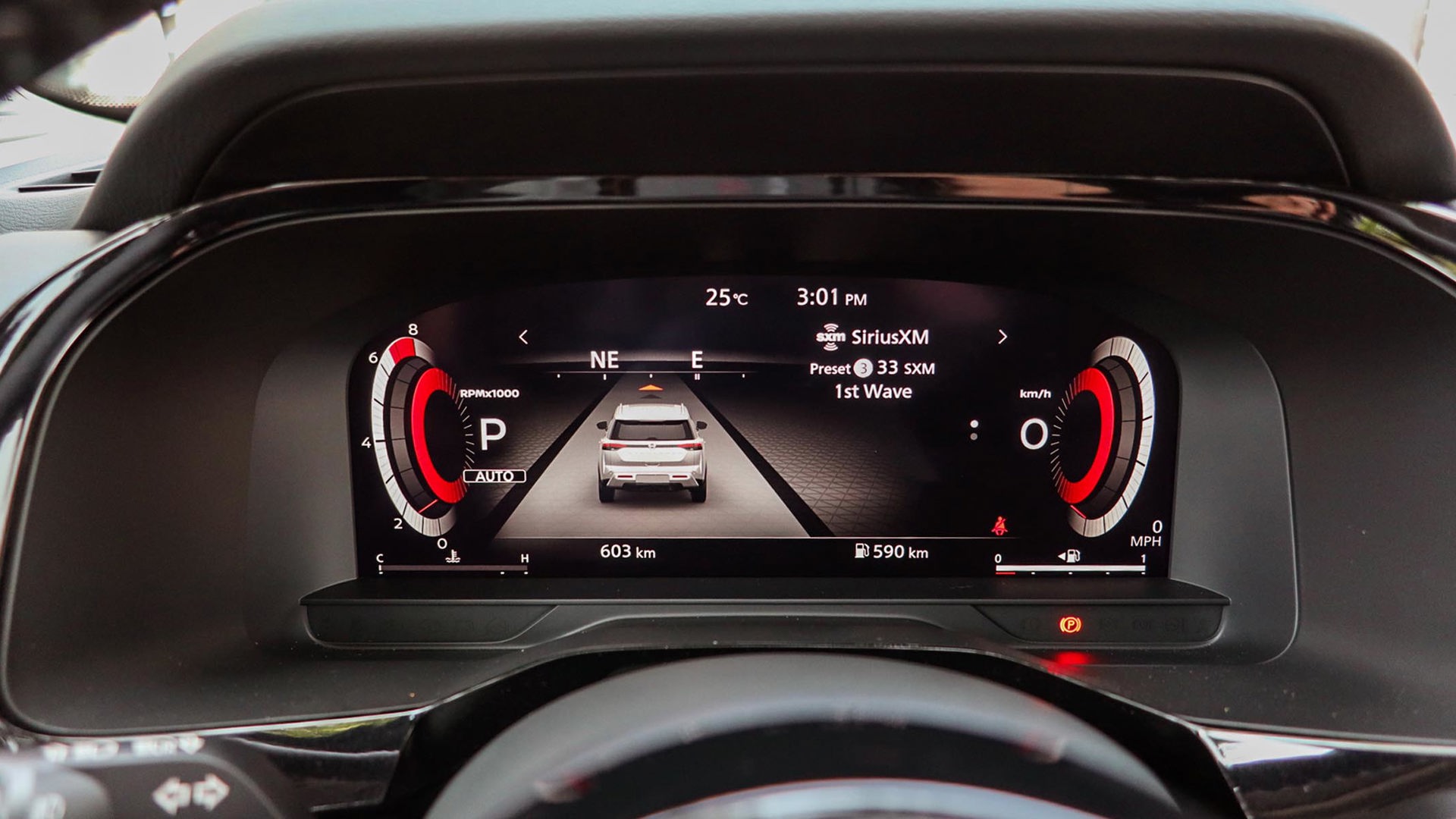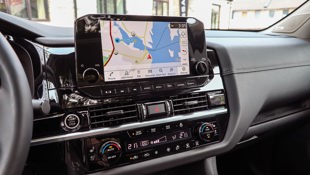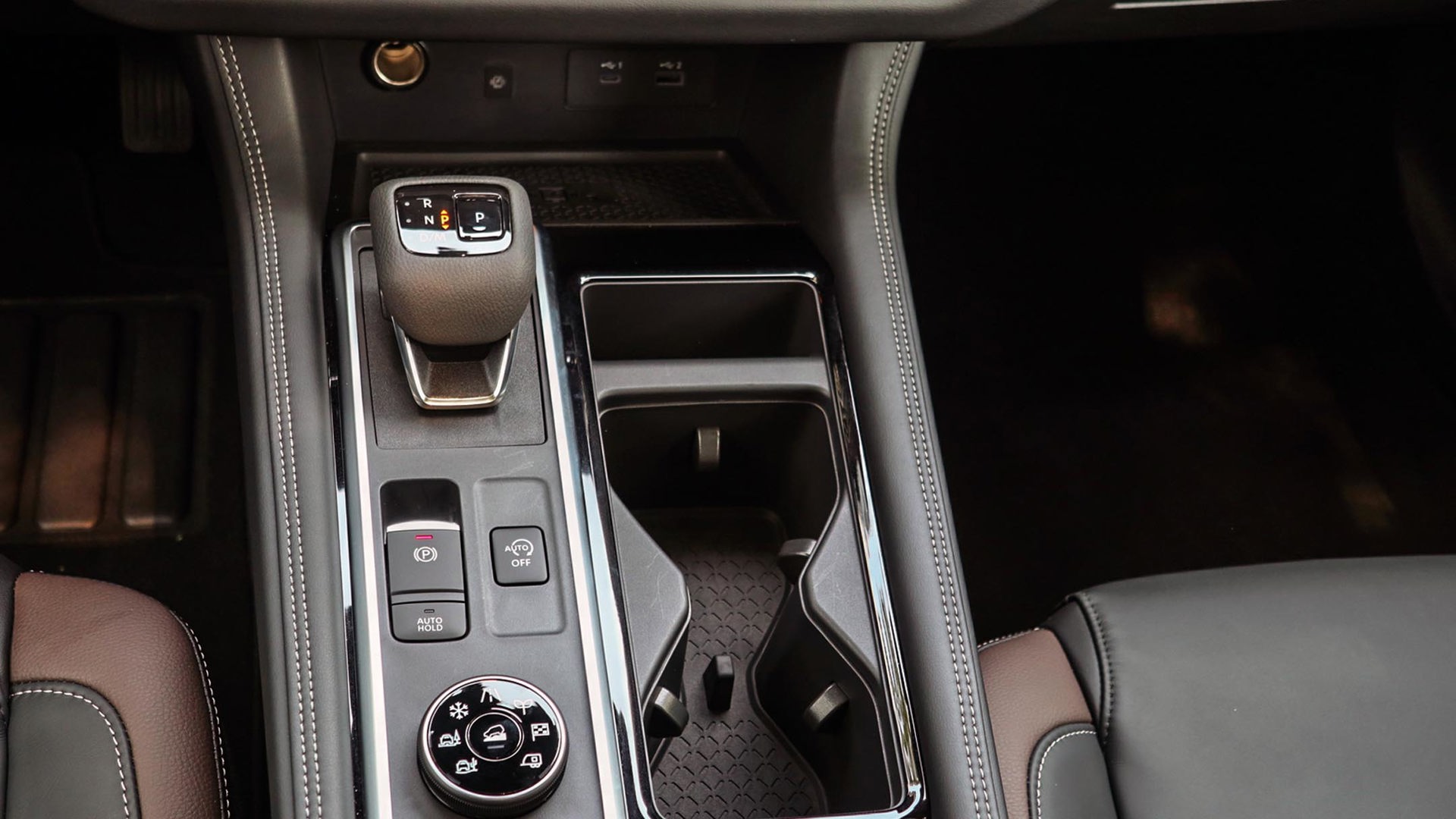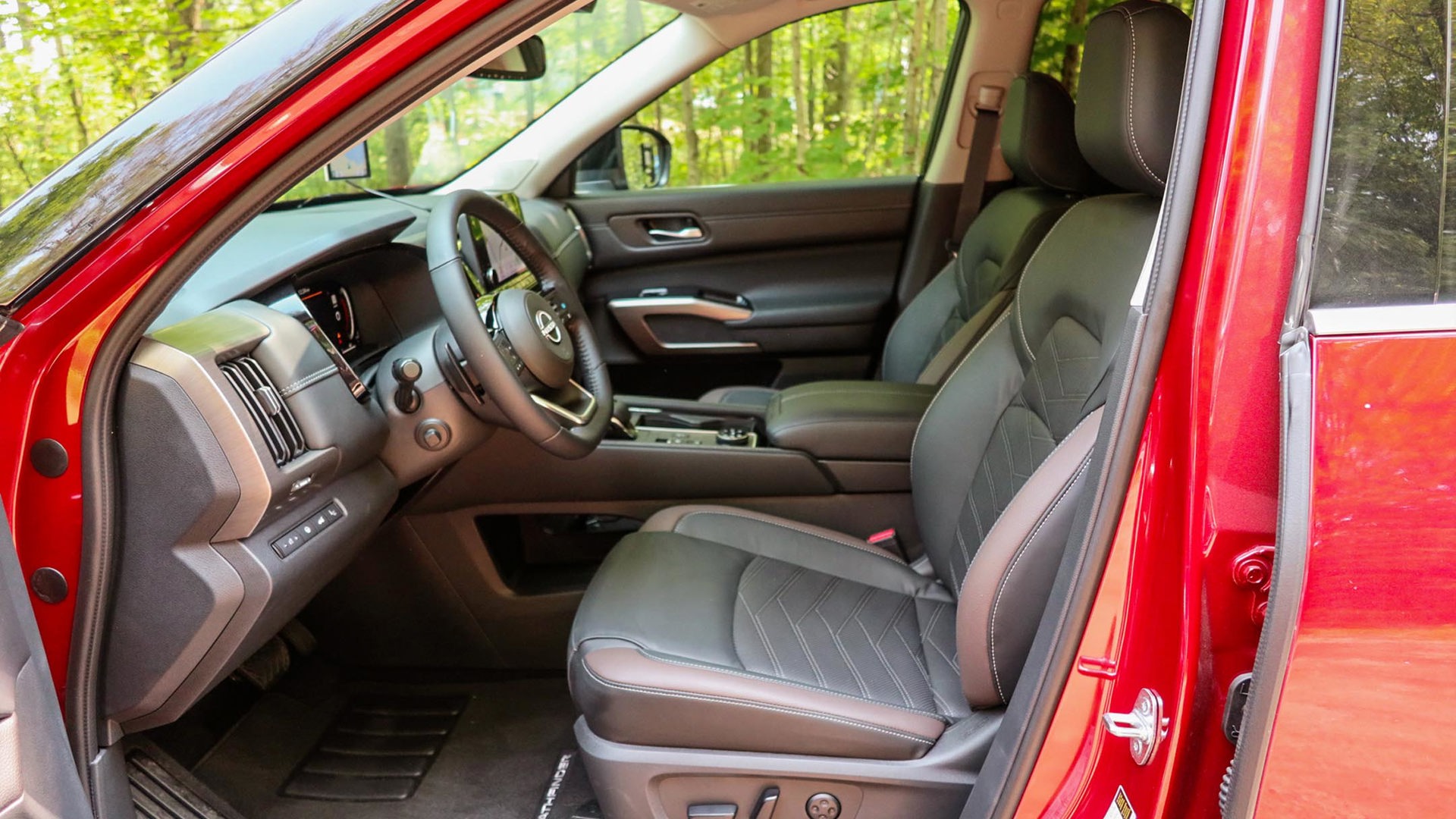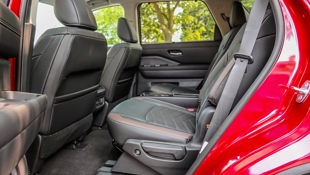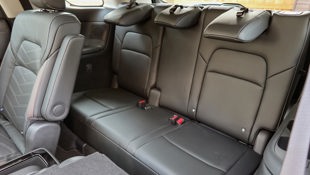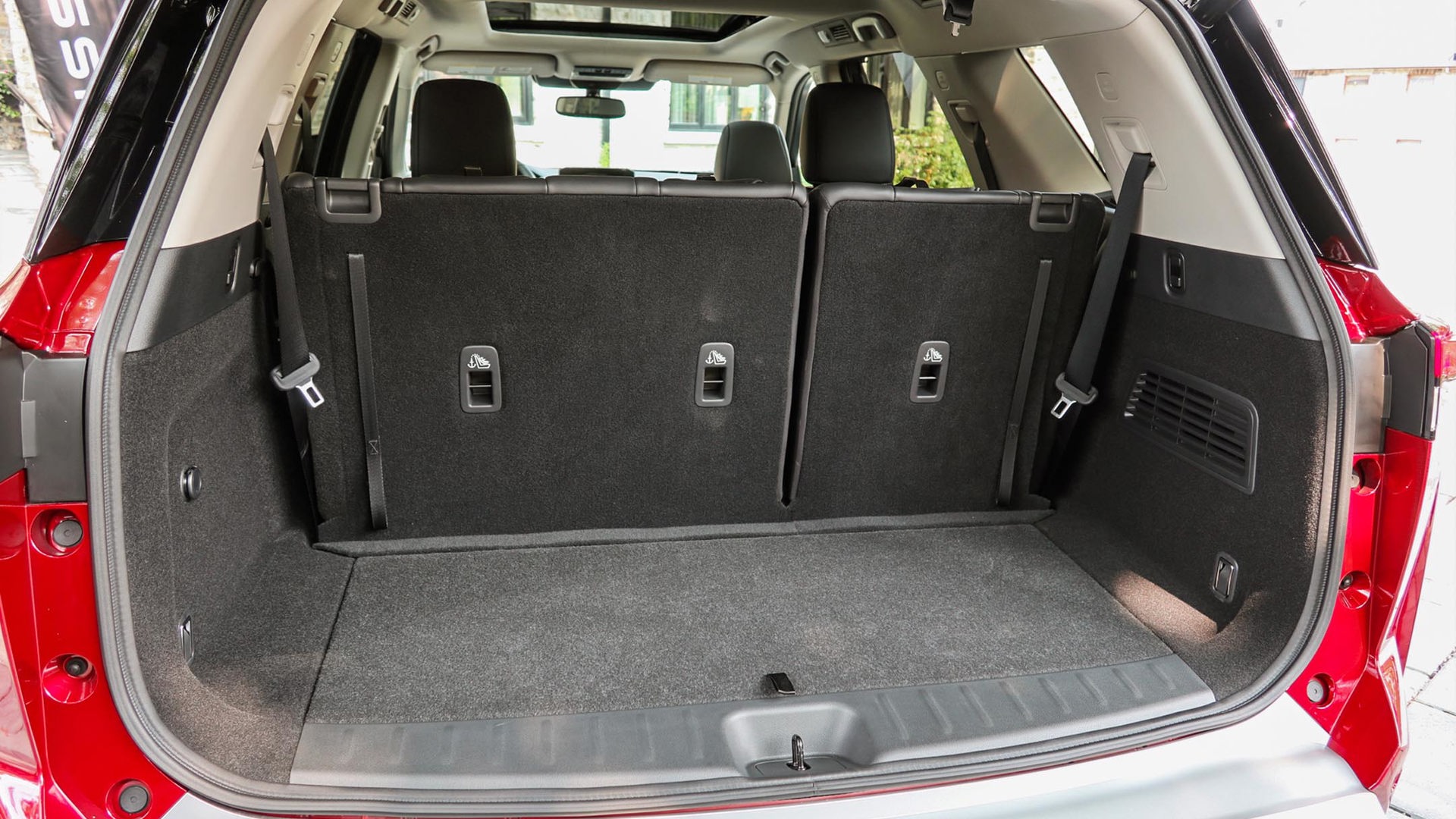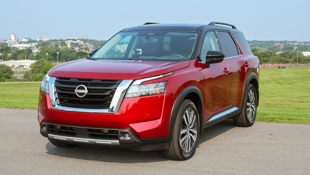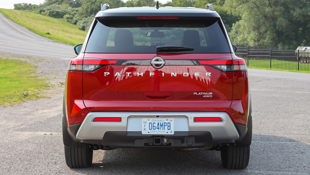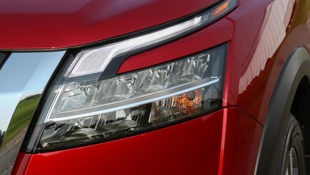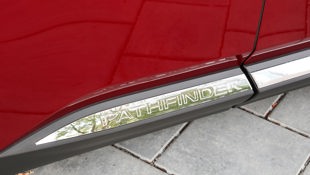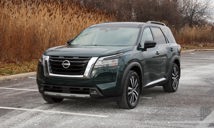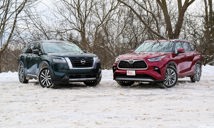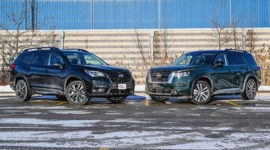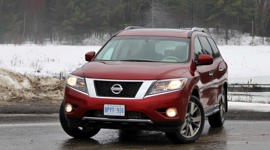When an automaker redesigns a vehicle, it should focus on keeping what’s good and changing what needs to be changed.
That’s exactly what’s been done with the 2022 Nissan Pathfinder. This SUV has been around since 1986, and for its fifth generation Nissan kept the V6 engine but mated it to a better transmission; kept the vehicle platform, but improved the suspension and steering; and added new features and technology. It’s slightly wider and taller, but also marginally shorter than before.
It still has three rows of seats, but that rearmost row has been widened, so – technically, if not too comfortably – it can handle three passengers across for a total of eight occupants in most models, including as many as five child seats or boosters. The top-line Platinum trim holds seven people, as it adds the Pathfinder’s first-ever second-row captain’s chairs.
It’s arriving at dealers now, starting with the base S at $45,658, and moving up through the SV at $48,658; the SL at $52,258; and my ride, the Platinum, at $56,258. All prices are before tax but include a non-negotiable $1,860 freight charge.
Same, But Different
All trims use a 3.5L V6 engine that makes 284 hp and 259 lb-ft of torque. It’s becoming common to replace these larger powerplants with smaller turbocharged ones, but I’m a fan of non-turbo engines for their simplicity of fewer moving parts, especially if one plans to keep the vehicle for a long time.
Nissan has replaced the gearless continuously variable transmission (CVT) with a nine-speed automatic, and it’s a good decision. This combination is excellent: it’s powerful but quiet, the transmission shifts very smoothly, and there’s a slight improvement in fuel economy, with a published rate of 11.6 L/100 km in the city, 9.2 on the highway, and 10.5 combined. A capless fuel filler is new, too. But I’m not impressed with the new electronic gearshift lever, which you pull back for drive, push forward for reverse, and then have to press a separate button for park.
All trim levels include all-wheel drive (AWD) as standard equipment and it works well, as I discovered over many kilometres on winding gravel roads. The Pathfinder primarily powers its front wheels, but can send as much as 50 per cent of available torque to the rear when needed.
There’s a new clutch coupler to the rear wheels, along with numerous sensors monitoring speed, steering angle, and other factors. The old system powered the rear wheels after the front ones lost traction. The new one figures out when you’re going to need the extra help, and kicks in proactively. On my gravel trails, the back tires obediently followed the front ones, and when I intentionally took a curve too quickly and got a bit of rear-end wiggle, I took my foot off the throttle, and the anti-slip systems kept me out of trouble.
There are seven drive and terrain modes, accessed through a console-mounted dial, including for mud and ruts, snow, eco mode, and towing – and the Pathfinder can pull 2,722 kg (6,000 lb), with trailer sway control now included.
The Pathfinder feels substantial – it’s a bit lighter than before, but still weighs some 2,000 kg (4,409 lb) – but body roll is well-handled in tight curves thanks to better shocks and dampers. The electric power steering has also been updated, and while Nissan can sometimes tune it to be too light, the Pathfinder’s steering is well-weighted and responsive. The cabin is very quiet, thanks to improved sound-deadening. Overall, this is a very smooth and comfortable sport-ute on city streets or during highway driving.
Tons of Tech and Space
Nissan’s advanced driver-assist system is included in all trims, adding adaptive cruise control to keep its distance from traffic ahead, and steering assist that keeps the vehicle centred in its lane. It works well under most circumstances, but it’s not infallible; during testing, the highway was repaired with a wide tar strip and the lane painted over it, and the system was confused over which edge was the lane marking. But remember: it’s an assist, not a self-driving system. Should you prefer, you can use the adaptive cruise without the steering help.
The interior is handsome and well thought out, with such touches as a phone-friendly shelf, wide-opening doors, and a storage bin under the cargo floor. I like simplicity, and the climate functions, seat heaters, drive mode, and other functions are handled by buttons rather than menus in the centre screen. That’s a big thumbs-up right there.
The front and second-row chairs are supportive and comfortable. To access the third row, both captain’s chairs fold and slide forward via one-touch buttons. The openings are wide enough for easy entry, but as with almost all three-row SUVs, that final row has hard cushions and not much legroom. The second and third rows fold down, and Nissan says you can haul home the ubiquitous 4-by-8 sheet of plywood in it.
The infotainment system, housed in a new nine-inch touchscreen on upper trims, is easy to figure out, although I’d prefer if it were tipped just a bit toward the driver for easier viewing. Higher trims also get a new digital dash and head-up display.
All models include emergency front and rear braking, blind-spot monitoring, automatic headlights, heated front seats and steering wheel, tri-zone automatic climate control, power driver’s seat, Apple CarPlay and Android Auto, and Siri/Google Assistant voice recognition. Moving up the trim ladder adds such items as navigation, panoramic sunroof, ventilated seats, rain-sensing wipers, wireless charger, and leather upholstery.
Final Thoughts
There are some very good competitors in this segment, including the Toyota Highlander, Hyundai Palisade, Kia Telluride, Volkswagen Atlas, Chevrolet Traverse, and Honda Pilot, among others. They all have their good points, and the Pathfinder doesn’t entirely blow them away. However, with its smooth ride, great powertrain, and comfortable interior, this redesigned Nissan is going to be a very serious competitor.
